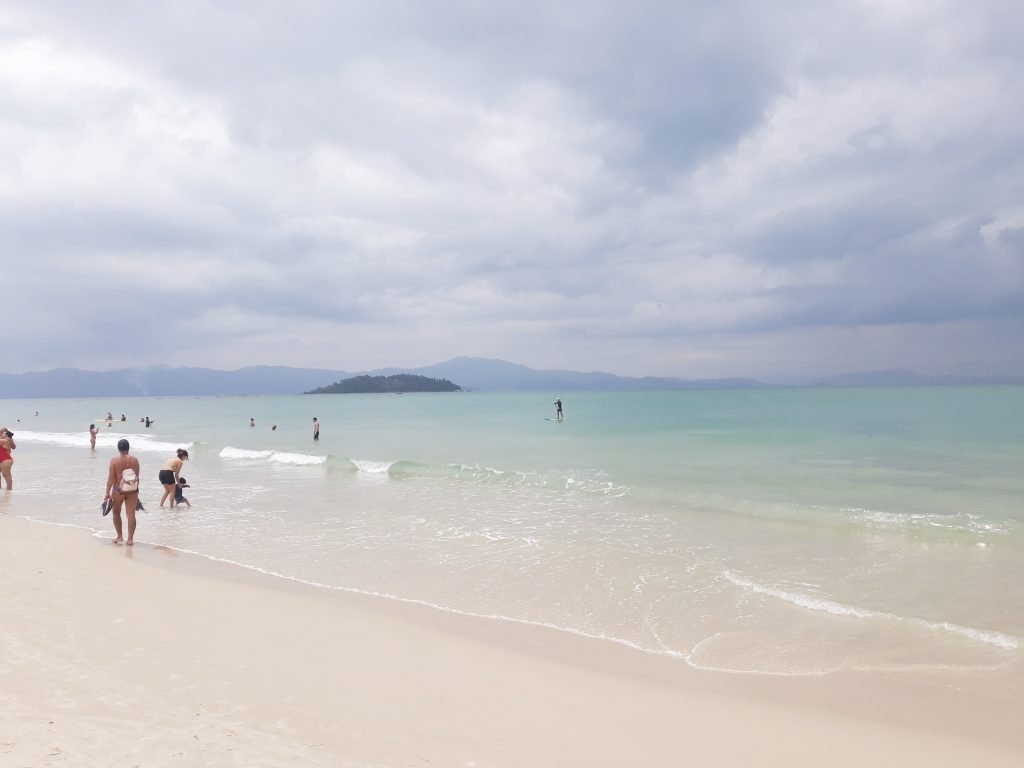The European permanent residency game has completely changed, and most people are playing by outdated rules.
Countries that were once welcoming have introduced strict new language and culture tests, while others have quietly become much more accessible.
I’ve helped hundreds of experts move to Europe and with my team, we took weeks researching all 27 EU countries for this definitive ranking.
What I found was shocking:
- One country offers permanent residency with just €80,000 a year in income.
- Another demands €50,000 in annual income plus huge investments just for you to pre-qualify.
- The language requirements are equally extreme. Some countries test you in languages most people can’t even pronounce.
If you are serious about obtaining permanent residency in Europe, this ranking might save you years of wasted effort. The next few paragraphs reveal exactly what you’re facing. Get this wrong and you’re looking at $10,000 plus in wasted application fees and years of delay.
Criteria for Ranking the 27 EU Countries by Permanent Residency Access
- Length of Continuous Legal Residence Required
These range from just three years in Hungary to a crushing eight years in Denmark. - Language Proficiency Requirements
Some countries have no language test at all. Others demand proficiency in languages you’ve probably never heard of. - Financial Stability Requirements
These range from €8,000 annually in one country to over €50,000 in places like Malta.
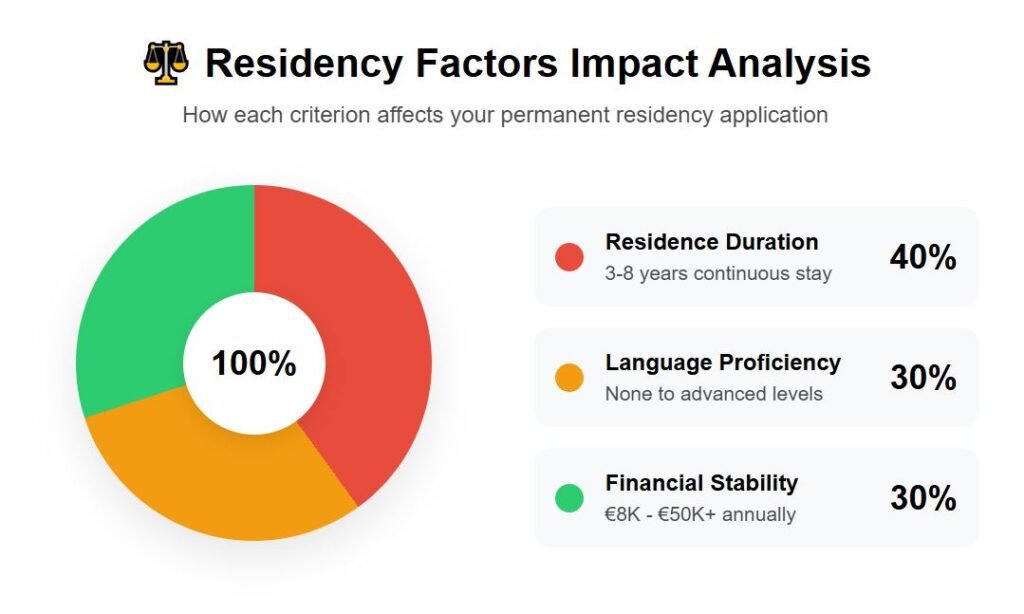
Remember, this ranking is about permanent residency — which is often what you have after years living in a country under temporary residency. The benefits of a permanent resident are usually bigger than a temporary resident. In all European Union countries except one, before you become a permanent resident, you must spend years as a temporary resident.
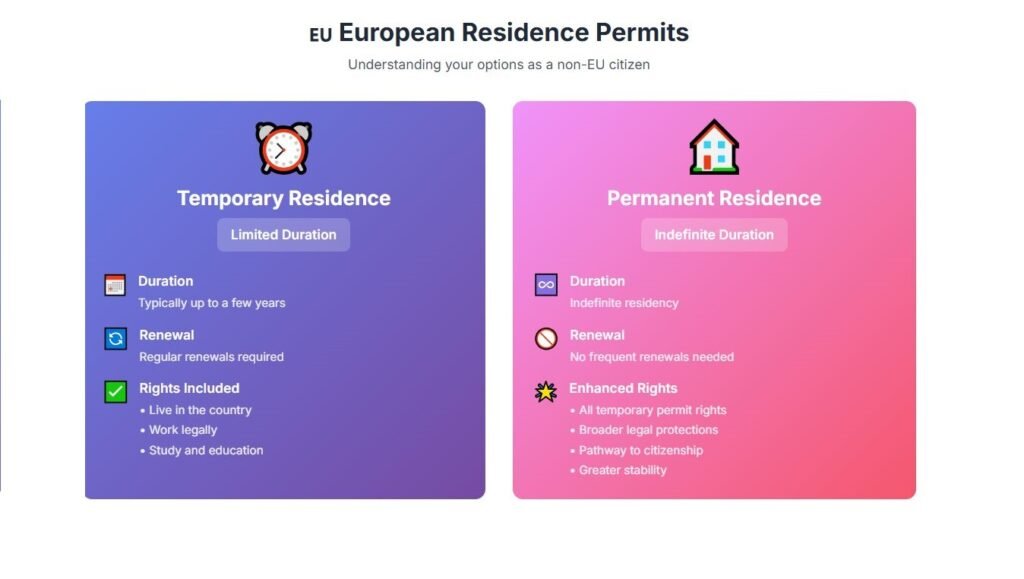
If you want me to write an article about the easiest countries in Europe for you to obtain temporary residence, let me know in the comments section. If enough people ask for it, I will do it. Many people seek to travel or live abroad, and understanding the visa processes can make all the difference. I also listed the easiest temporary residence visas in Europe, focusing on the requirements and benefits of each country. This information could be invaluable for those considering a move or extended stay in Europe.
The Hardest to Easiest EU Countries to Obtain Permanent Residency
FREE FOR A LIMITED TIME: Grab your Expat Wealth & Lifestyle Compass ($108 value) today! Includes our 74-page guide of Affordable European Cities, our Zero-Tax countries report, and our expat checklist. https://bit.ly/ExpatWealthLifestyleCompass Join us here before this offer ends.

27. Denmark – The Time Barrier
This is what an expert in Denmark told us:
“Danish immigration is specifically written to keep foreigners out unless really necessary. I myself, with a Danish wife, found it quicker and less stressful to move to another European country instead of Denmark, despite the fact that I have advanced qualifications.”
Denmark stands alone with an 8-year residency requirement, making it the hardest EU country for permanent residency. While most countries require five years, Denmark demands eight full years of continuous legal residence before you can even apply.
The language barrier is considerable. While a basic requirement is the Pro 2 test and A2–B1 level exam, applicants must also fulfill other supplementary requirements. For many who lack a long work history in Denmark, the de facto language requirement becomes passing the more advanced Prøve i Dansk 3 test, which is at a B2 level.
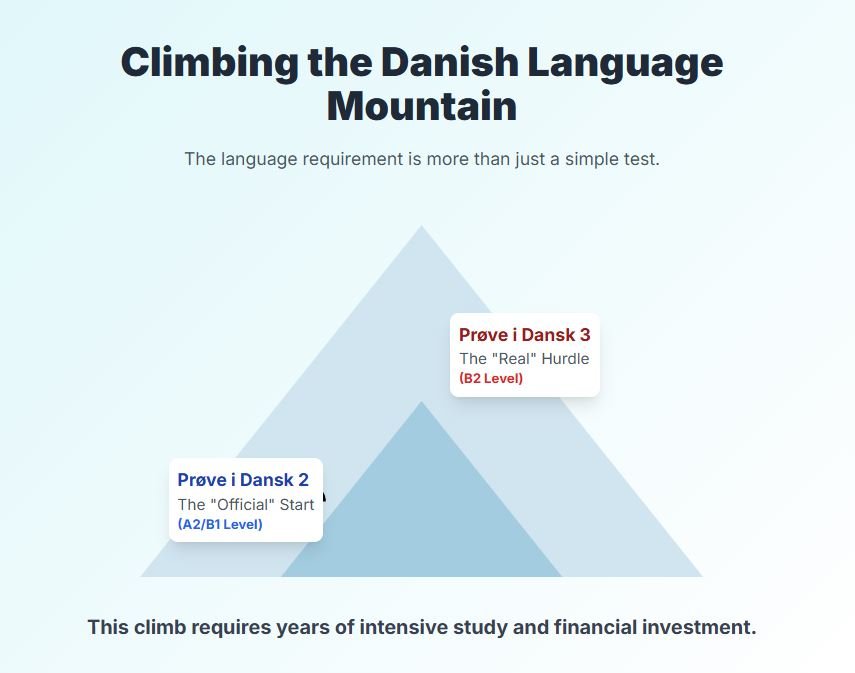
Such a level requires years of intensive study and significant financial investment in language preparation. Denmark offers exemptions from working income requirements for retirees, but the 8-year time barrier remains unchanged for everyone.
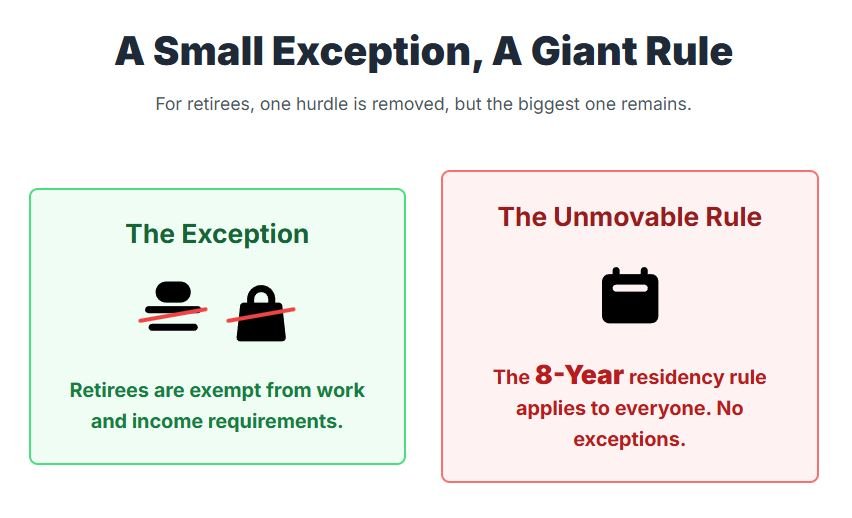
Denmark earns the hardest ranking because time is the one factor you cannot buy or shortcut. Money can’t reduce those eight years, connections won’t help, and even perfect Danish skills won’t speed up the clock.
I am not here to judge immigration policies but to help you navigate them.
It’s also not a surprise that Denmark is the hardest of all 27 EU countries to obtain citizenship, as I covered in this article.
26. Finland – The Language Nightmare
Finland is about to make permanent residency even harder with new laws coming January 2026. They are extending the residence period from four to six years and adding mandatory language requirements that didn’t exist before.
The language barrier is brutal. You must achieve B1 level in Finnish, one of Europe’s most difficult languages for English speakers. Finnish belongs to the Finno-Ugric language family, completely unrelated to Germanic or Romance languages, and is more widespread in Siberia than in Europe.

You can opt for the easier Swedish test instead, but B1 level in any language requires multi-year commitment and intensive study.
New mandatory work history requirements will eliminate many retirees. To apply for permanent residence, you need two years of work history without relying on social assistance.
Additionally, the financial threshold for permanent residence in Finland is significantly higher than many believe. For non-working applicants, the requirement in the housing area is €1,210 net per month (€14,520 per year), while most work permits require a minimum gross salary of €1,600 per month (€19,200 per year) as of 2025.
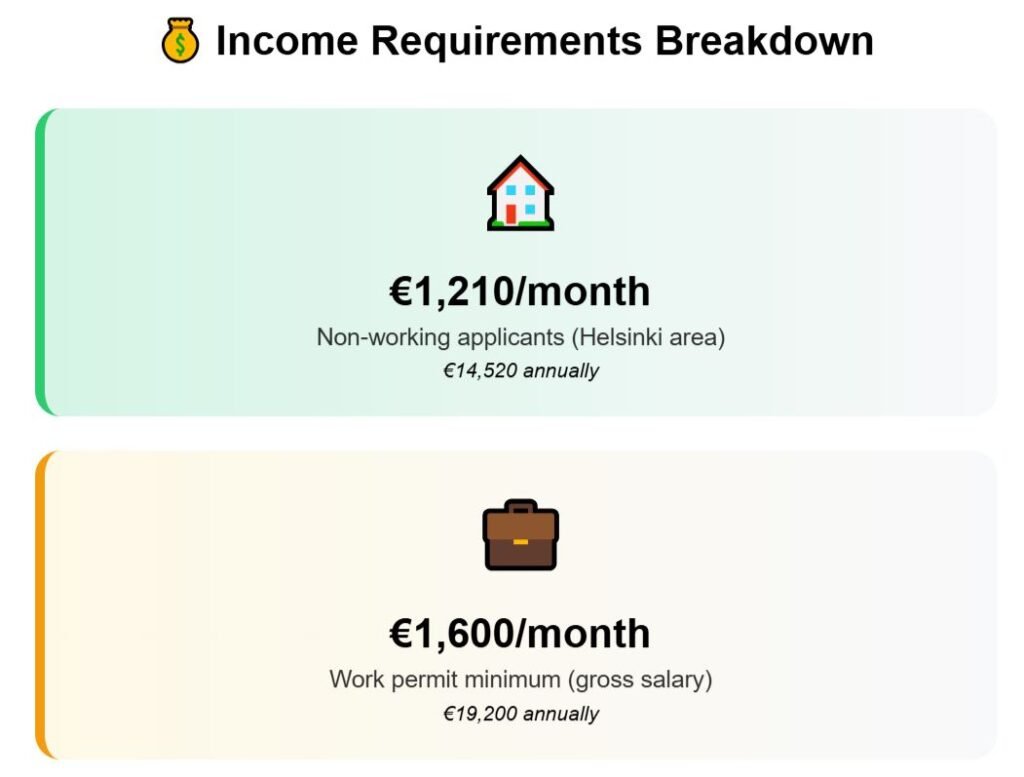
Fast-track options exist at €40,000 annually, but that’s unrealistic for most retirees.
25. Slovakia – New Language Rules
Starting July 15, 2025, Slovakia implemented mandatory A2 Slovak language requirements for long-term residence permits. Until then, Slovakia had zero language requirements, making it one of Europe’s most accessible options.
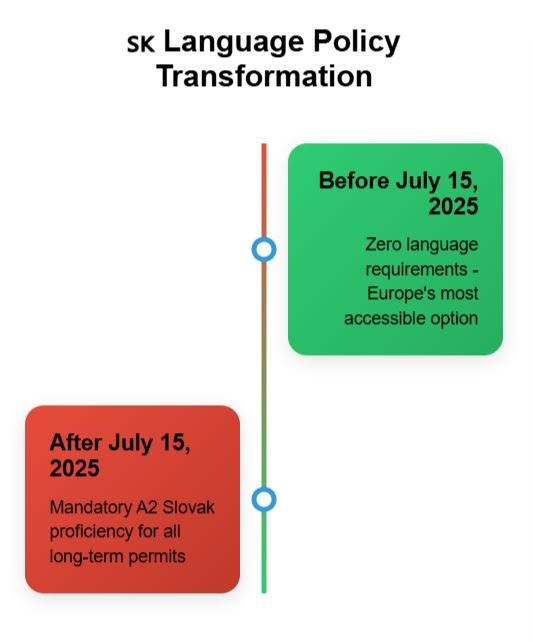
This timing created chaos for people already planning applications. You have months to either rush your current application or start learning Slovak. A2 level means handling basic conversations and routine tasks, not just tourist phrases. Slovak belongs to the Slavic language family, presenting real challenges for English speakers.

On the bright side, the financial requirements remain attractive at just €273 per month (€3,276 annually). But some pathways require business ownership with over €5,000 annual profit. There is no simple passive income visa for retirees.
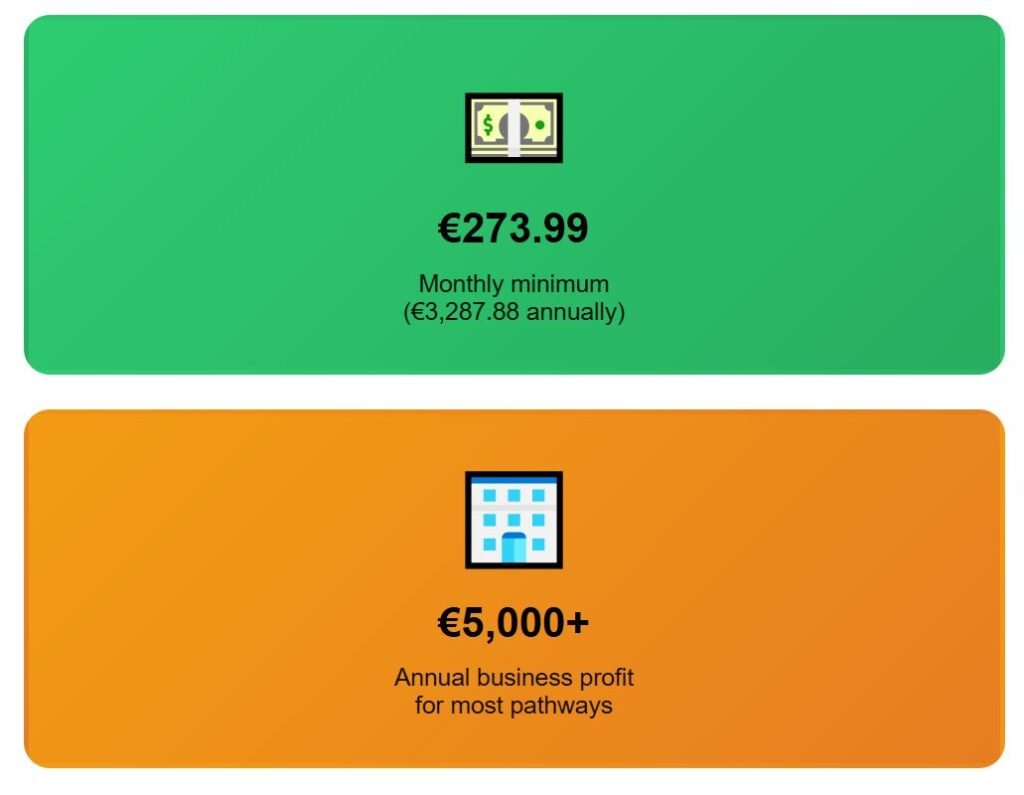
Additionally, Slovakia requires five years of residence before accepting your application for permanent residence.
24. Estonia – The Integration Challenge
Estonia requires you to learn one of Europe’s most unique language families before you can even think about permanent residency. Like Finnish, Estonian belongs to the Finno-Ugric family, completely unrelated to English, German, or Romance languages.

This means zero familiar words or grammar patterns to help you learn. The B1 requirement is not just conversational Estonian — you need advanced proficiency for complex topics like work discussions, detailed explanations of experiences, and connected text on familiar subjects.
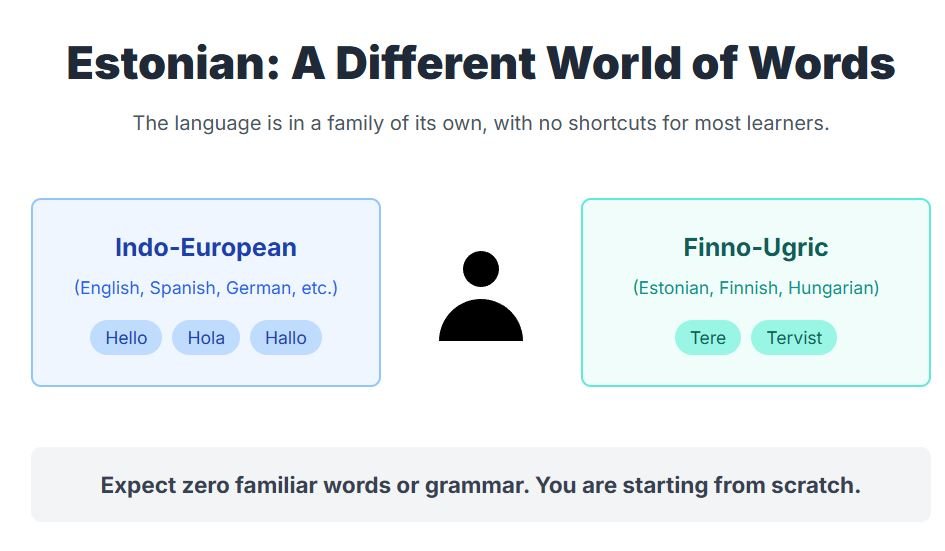
Finding quality Estonian language materials and teachers outside Estonia is hard. While online resources exist, the scarcity of structured courses and qualified instructors significantly slows your progress.
The integration requirement goes beyond language. You must prove deep cultural integration through community participation, demonstrating understanding of Estonian history and customs.
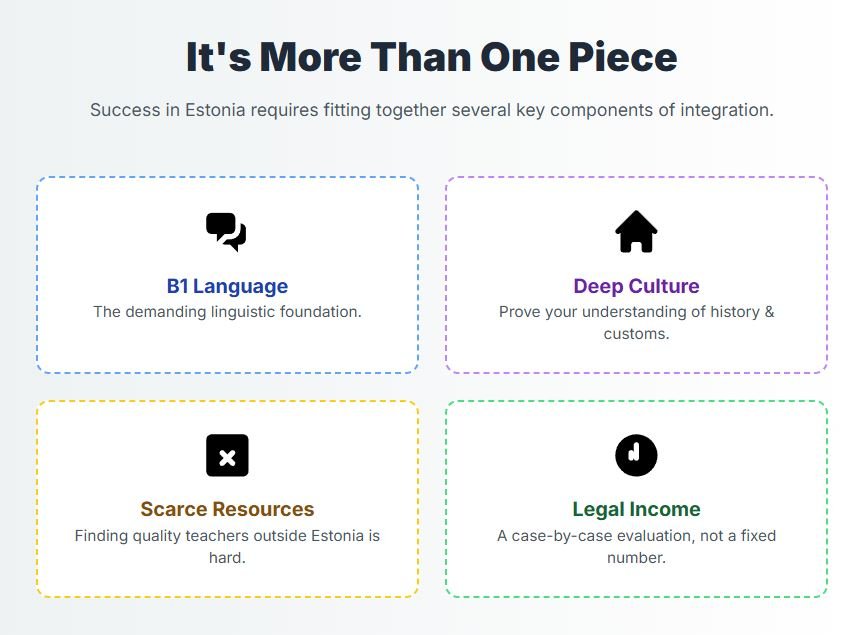
The financial requirements are discretionary based on proving permanent legal income on a case-by-case basis rather than a specific published amount.
23. Netherlands – The Life Exam
The Netherlands has turned permanent residency into a comprehensive life exam that tests far more than basic integration. The civic integration exam, known as the inburgering examen, evaluates both A2 Dutch language skills and extensive knowledge of Dutch society, culture, and history.
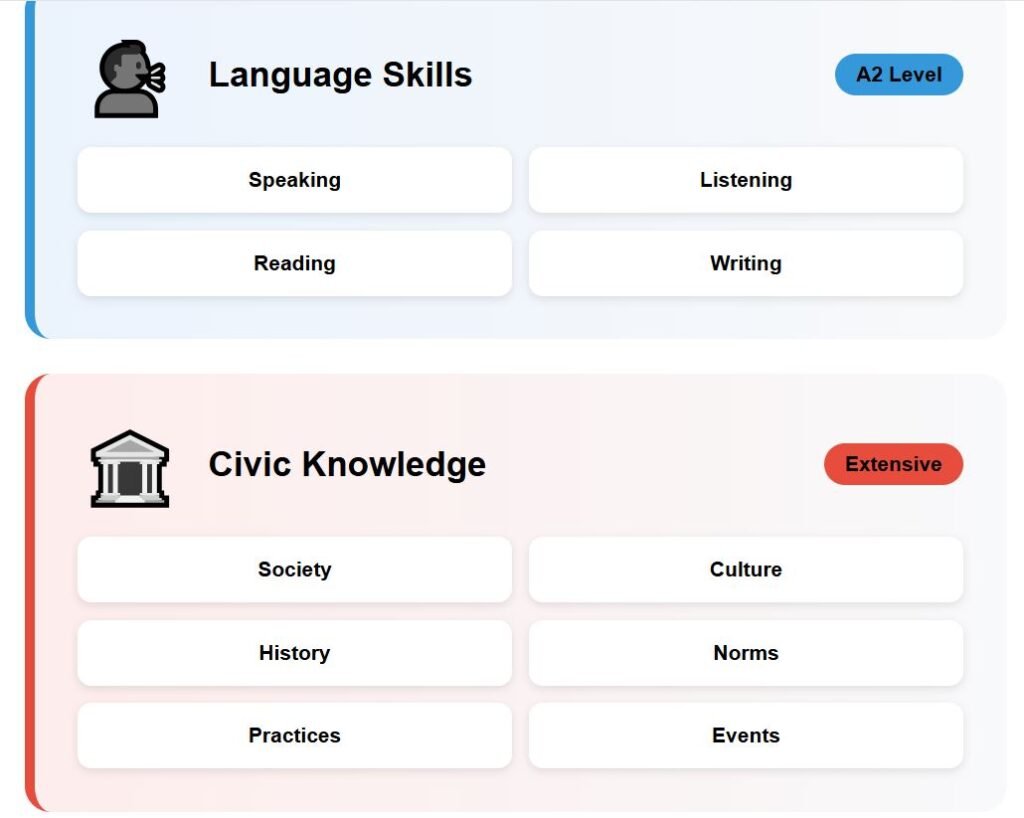
While A2 Dutch seems manageable compared to B1 requirements elsewhere, the civic knowledge component is extensive. You must demonstrate understanding of Dutch social norms, cultural practices, and historical events.
Requirements tied to the national minimum wage eliminate many digital nomads or retirees without Dutch pensions. You need substantial income to meet these thresholds. As of 2025, you must prove a gross monthly income of approximately €2,437 for a full-time worker.
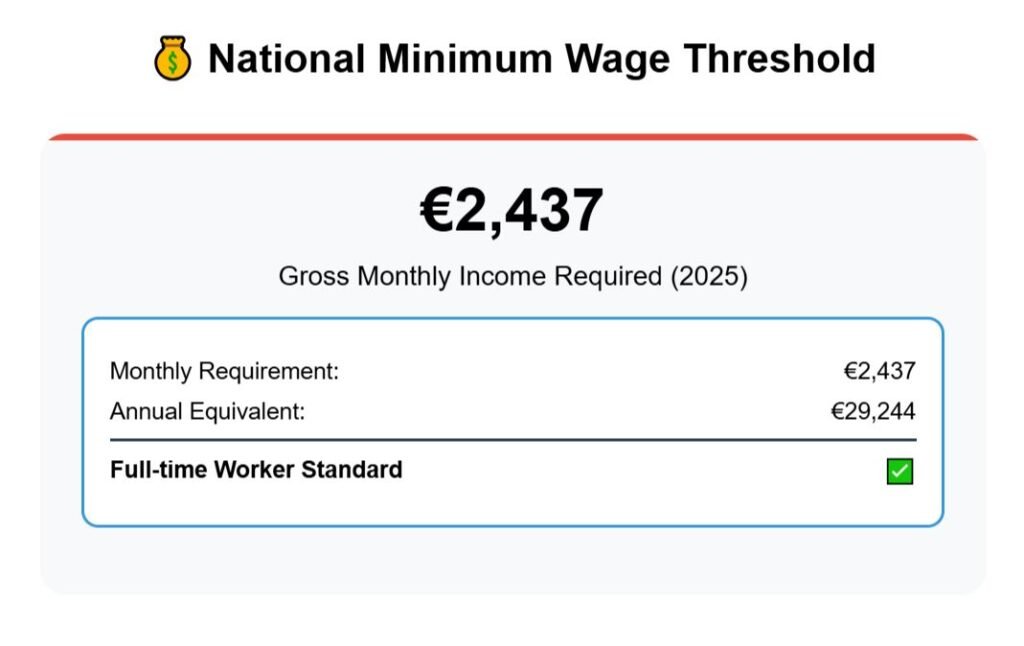
There is no specific retiree visa, so you must find alternative routes to even start the 5-year residency clock.
22. Germany
Germany offers fast-track options for some applicants but creates significant obstacles for others. The system heavily favors skilled workers and German university graduates over digital nomads or retirees seeking permanent residency.
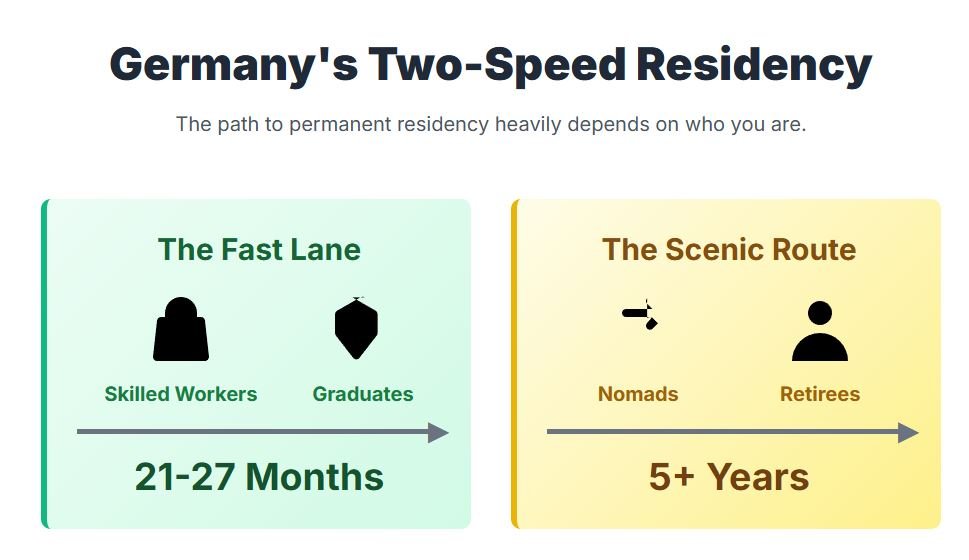
EU Blue Card holders can apply after just 21 months with B1 German proficiency or 27 months with A1 German. German university graduates can also apply after only two years of working. The B1 German requirement means intermediate language skills, plus passing the “Life in Germany” integration test. B1 levels require solid grammar mastery and effective communication in everyday situations.
It might sound difficult, but with the right tools, it’s perfectly doable.
LingQ is the secret weapon for learning German and other European languages that I recommend to my clients. The app uses authentic German content from day one, so you are learning real German, not just textbook phrases, and it makes learning a new language really fun.

The Life in Germany test assesses knowledge of German legal and social systems — essentially, a citizenship-style exam that adds another layer of complexity. Digital nomads and retirees face a major disadvantage compared to employment-based routes. They need the standard 5-year residency requirement plus 16 months of pension contributions.
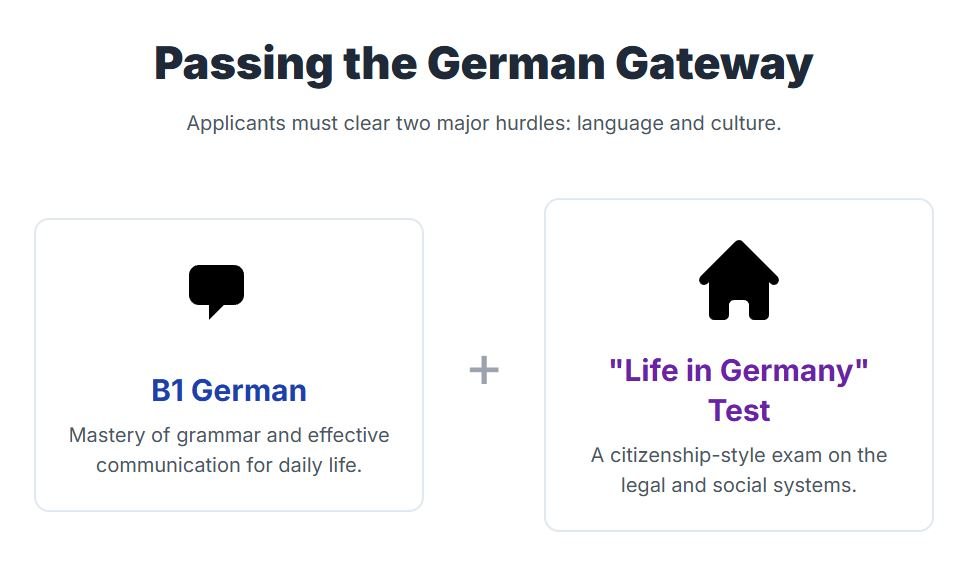
There is no dedicated passive income visa, forcing nomads and retirees to prove substantial savings or pensions — either assets of €216,481 or a private pension of €1,154 per month. That’s a huge amount, especially when compared with the much lower requirements of the next countries in this list.
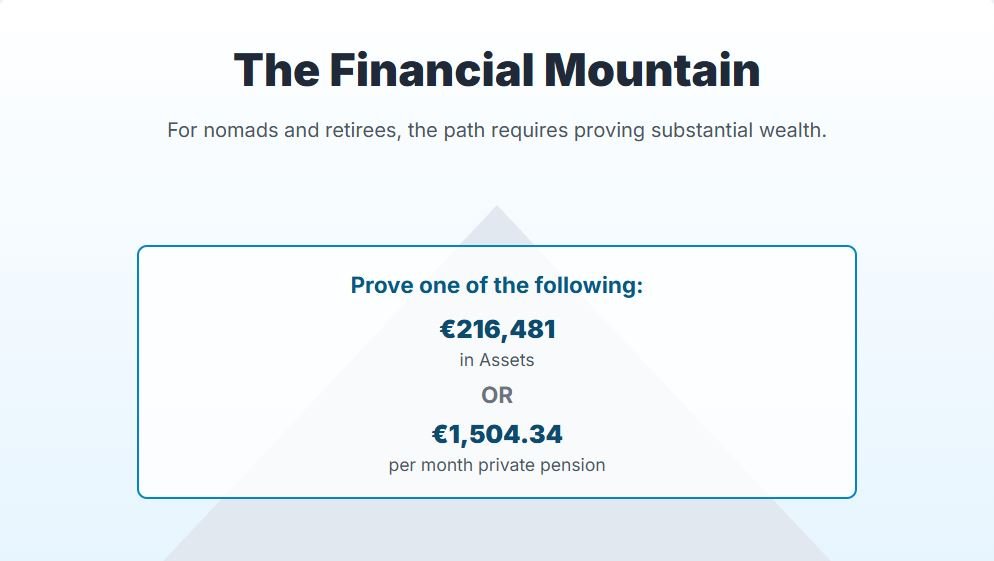
21. Croatia
Croatia requires B1 Croatian proficiency before you can obtain permanent residency. Since Croatian is not an easy language, this places Croatia among the most linguistically demanding countries for long-term residents.

B1 means you can handle fast-paced conversations and written texts in Croatian. The test measures multiple components: listening, reading, writing, grammar, and speaking. The language test includes Croatian culture and history knowledge, adding another preparation layer. You must study Croatian cultural practices, historical events, and social norms alongside language acquisition.
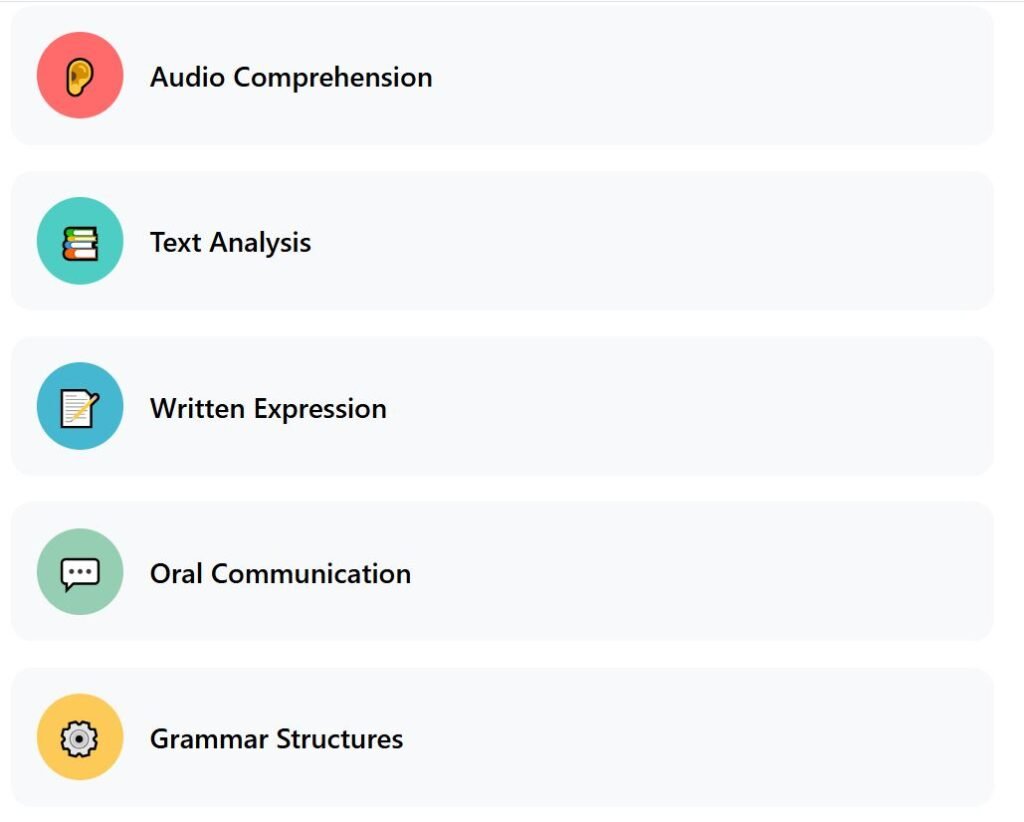
Limited international resources for learning Croatian to B1 level create significant preparation challenges. The €750 to €800 monthly requirement for permanent residence is not low but not among the highest either.
20. Slovenia
Slovenia changed the rules in November 2024, catching many people mid-process with their permanent residency applications. Until November 1st, 2024, Slovenia had zero language requirements for permanent residency. Now you need A2 level certification before approval.
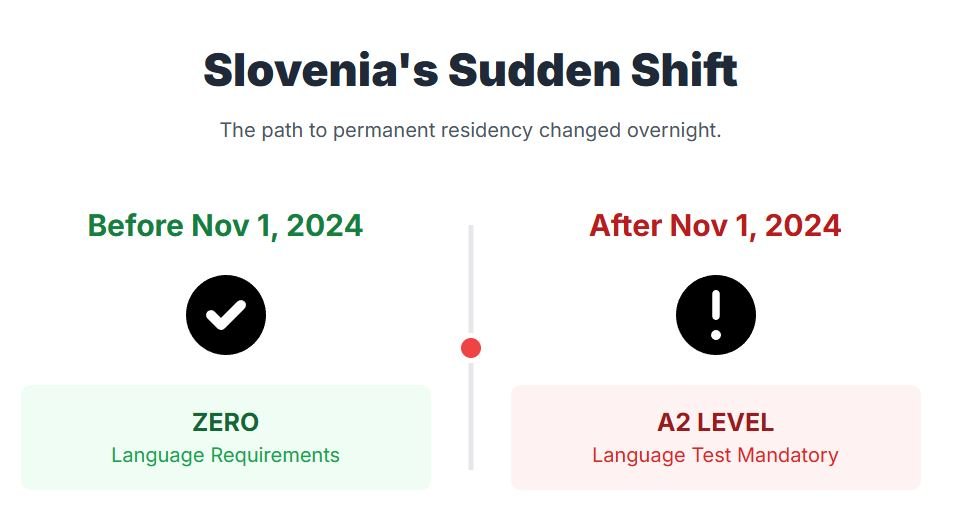
Their retroactive application meant existing applicants suddenly faced language standards that did not exist when they began the process. Slovenian shares similarities with Croatian but has unique complexities that make A2 certification challenging, despite A2 still being considered a basic level.
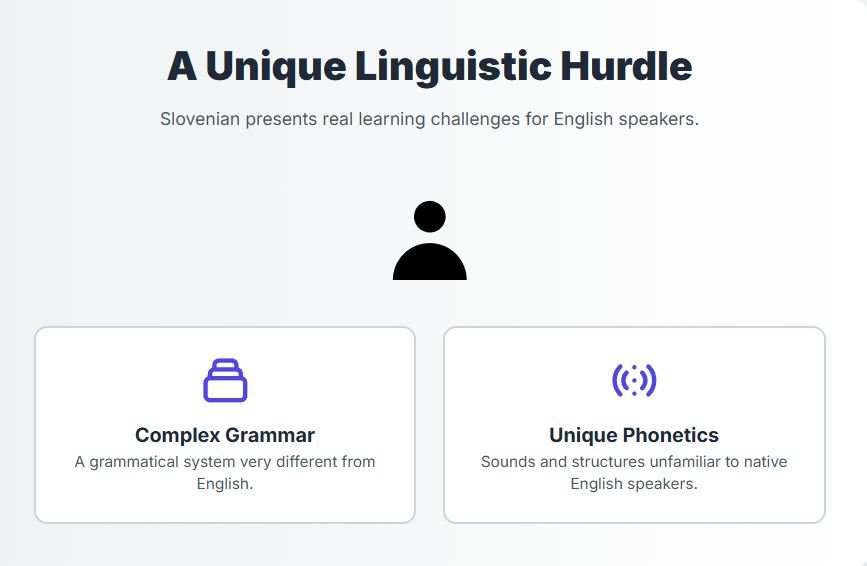
The South Slavic language features complex grammar and unique phonetic structures that create real learning difficulties for English speakers.
19. Poland
Poland demands B1 level proficiency, and Polish is one of the more complex Slavic languages. By some measures, it is the most difficult of all Slavic idioms.
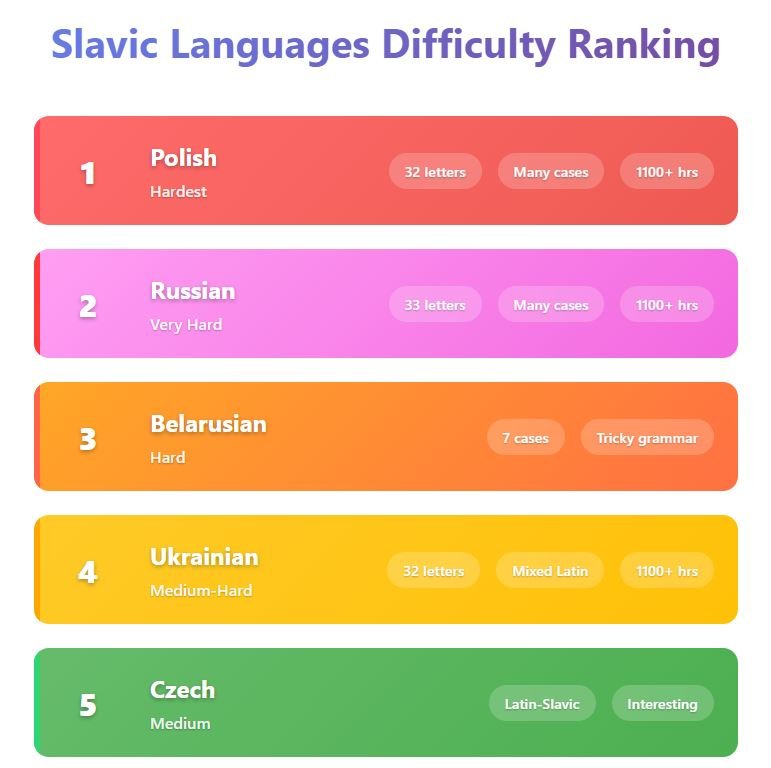
Polish grammar includes seven cases and complex verb aspects that determine whether actions are completed or ongoing. You need official certification through Polish government testing to prove your B1 proficiency.
Most people need years of intensive study to reach B1 Polish from zero. I learned Polish myself — it took me 5 years to reach a conversational level. Yes, it is that hard.
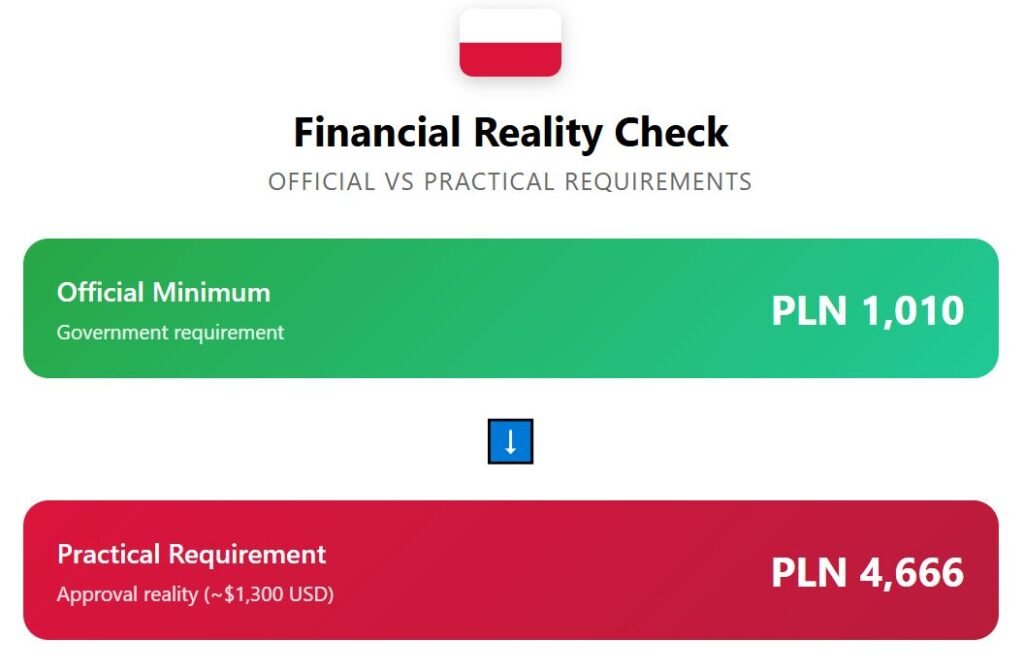
The income threshold officially requires more than 1,000 Polish złoty monthly. However, the office responsible for issuing permanent residencies might delay or reject people who don’t have an income of at least 4,666 złoty per month, close to $1,300. These values are for 2024, and they usually increase every year.
18. Romania
Romania takes a unique approach to language assessment. No formal test is required, just a conversation with an immigration officer during your application process. This sounds easier than studying for standardized exams but creates unpredictability that many find more stressful than formal testing.
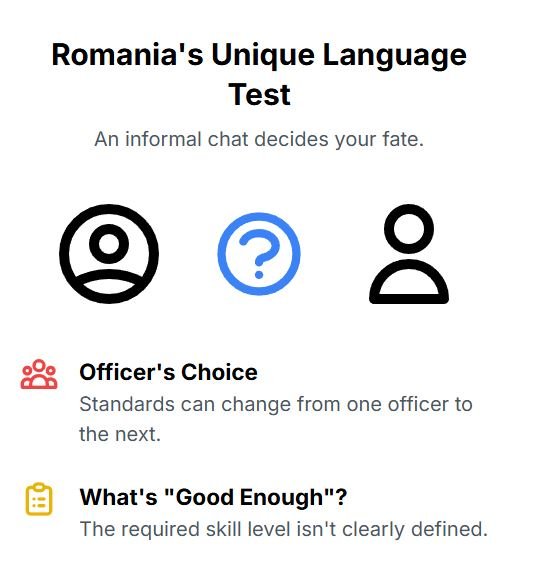
Officer discretion means standards can vary significantly between different immigration offices and individual officers. One officer might accept basic conversation skills while another demands more advanced proficiency. The “satisfactory level” requirement is not tied to specified Common European Framework levels, leaving room for interpretation.
How do you study for a subjective conversation? There is no curriculum, practice test, or clear benchmarks to guide your preparation. You must develop practical conversational skills without knowing exactly what the officer will expect during your assessment. Financial requirements are tied to the national minimum wage — approximately €750 per month in 2024 — which can change with economic conditions.

Romania proves that informal requirements can be as challenging as formal ones due to uncertainty. The absence of standardized tests introduces unpredictability.
17. Luxembourg
Luxembourg requires proficiency in Luxembourgish, a language spoken by fewer than 400,000 people worldwide. This creates an immediate barrier since most people have never encountered this Germanic language.

The spoken test demands A2 speaking and B1 listening in Luxembourgish. Daily life involves French, German, and Luxembourgish in a trilingual environment since Luxembourg is in the heart of the Benelux region. You must navigate multiple languages in various contexts, with Luxembourgish essential for full integration despite French and German being widely spoken.
Finding learning materials and qualified teachers for Luxembourgish is extremely difficult. The scarcity of resources makes it challenging to acquire the necessary language skills since the language is not taught widely internationally.
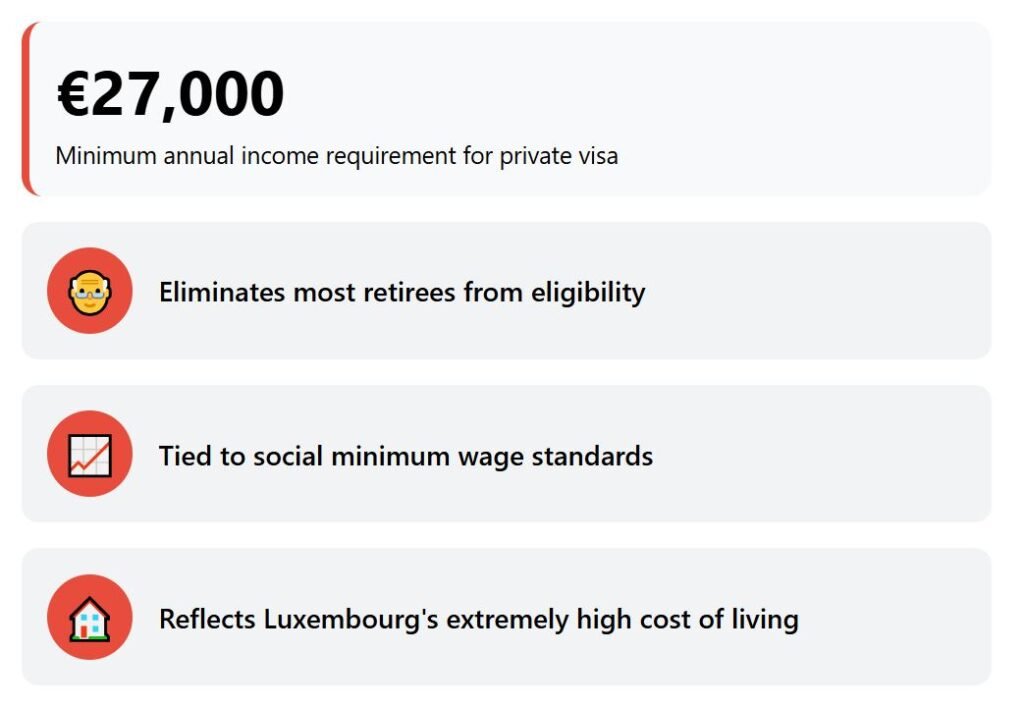
Financial requirements tied to the minimum wage eliminate many retirees. You need at least €27,000 annual income for private tourism visas, reflecting Luxembourg’s high cost of living and creating a significant financial barrier.
16. Malta
In Malta, English is an official language, so the island has a perfect language score. But the island has a different type of barrier that eliminates most applicants through pure financial requirements.
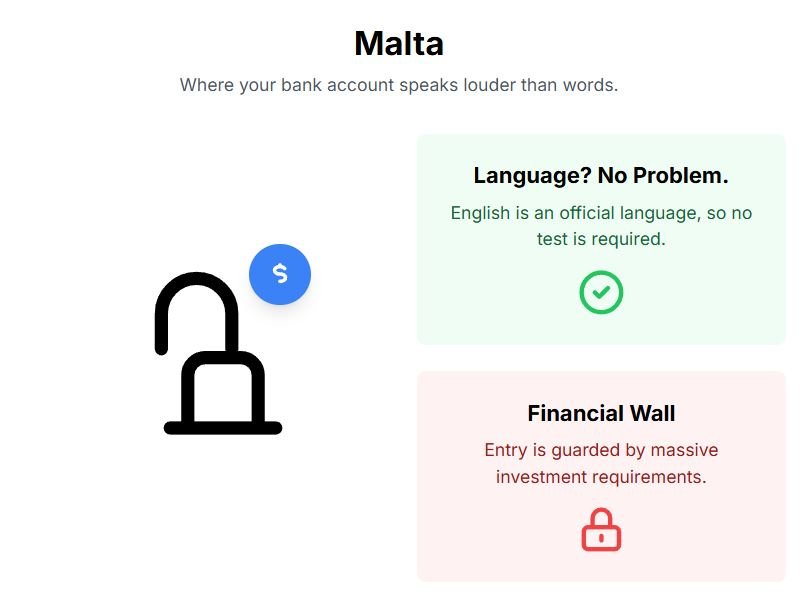
The primary route is the Malta Permanent Residency Program (MPRP), which requires massive upfront investment rather than time and integration. The MPRP requirements start with either purchasing property worth €375,000 minimum or renting for at least €14,000 annually.
Then the total cost reaches staggering levels: €60,000 in government fees if renting or €30,000 if buying property, plus a €2,000 charity donation, plus proof of €500,000 in assets. These additional financial obligations create a substantial overall program cost that reflects Malta’s focus on attracting wealthy individuals.
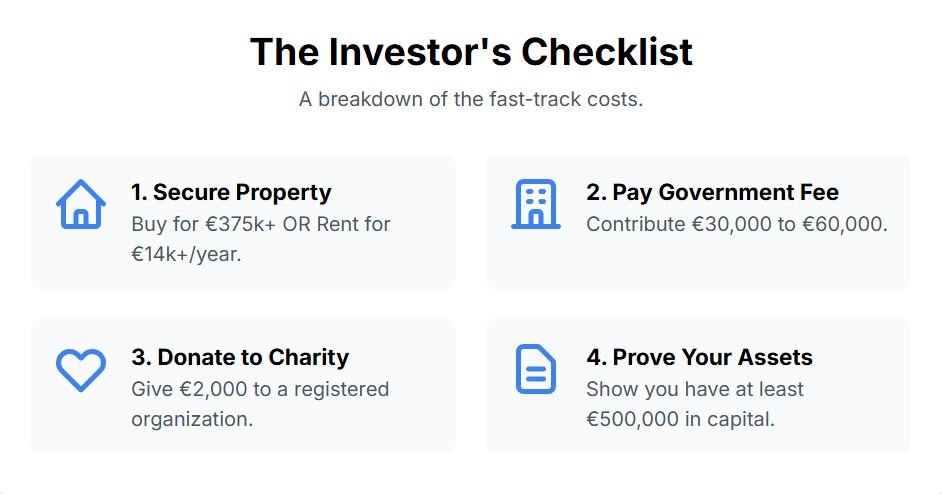
The time to residency becomes effectively zero for those meeting financial criteria, contrasting sharply with the standard time-served pathways elsewhere.
15. Czechia
Czechia quietly increased their language requirement from A1 to A2 in September 2021, catching thousands of applicants off guard. The A2 level demands comprehensive grammar understanding and basic conversational ability — a meaningful step up from A1 tourist phrases.
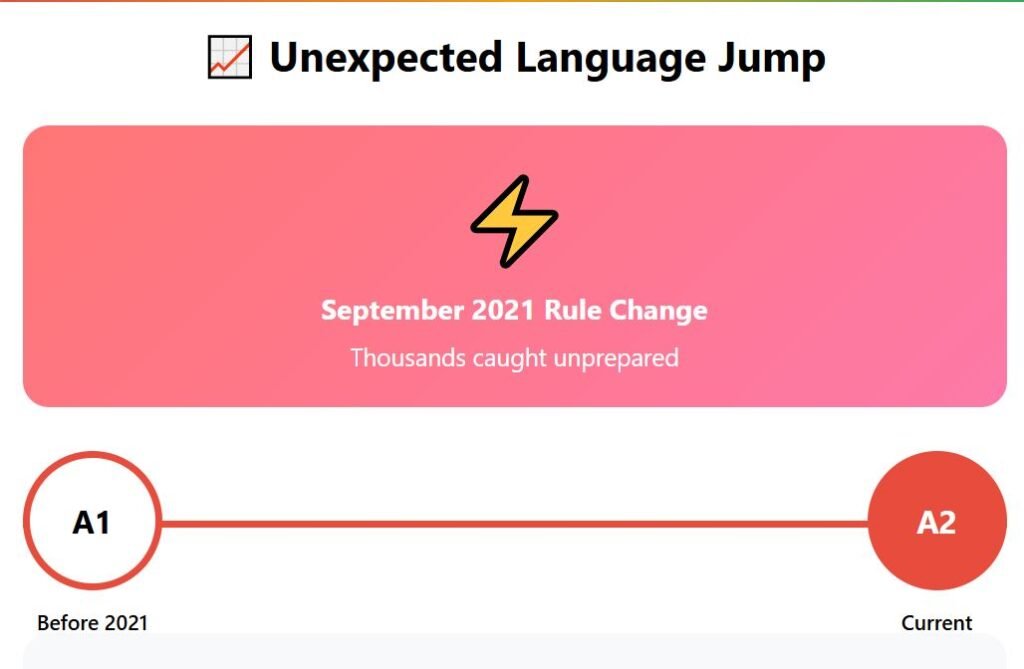
Czech belongs to the Slavic language family with a complex declension system that challenges English speakers. Still, Czech permanent residence is far easier than, for example, Polish permanent residence, which requires a B1 certificate — and the difference from A2 to B1 is considerable.

The financial requirements create confusing calculations beyond simple income statements. You must prove sufficient funds based on combining the living minimum for your family. The total required monthly income is 22,158 Czech crowns, which is approximately €10,635 annually. This is higher than many expect, and these values must come from regular stable monthly income, not one-time bank deposits.

14. Cyprus
Cyprus offers two completely different paths to permanent residency, each with its own major challenges but also with its own advantages that cater to different profiles.
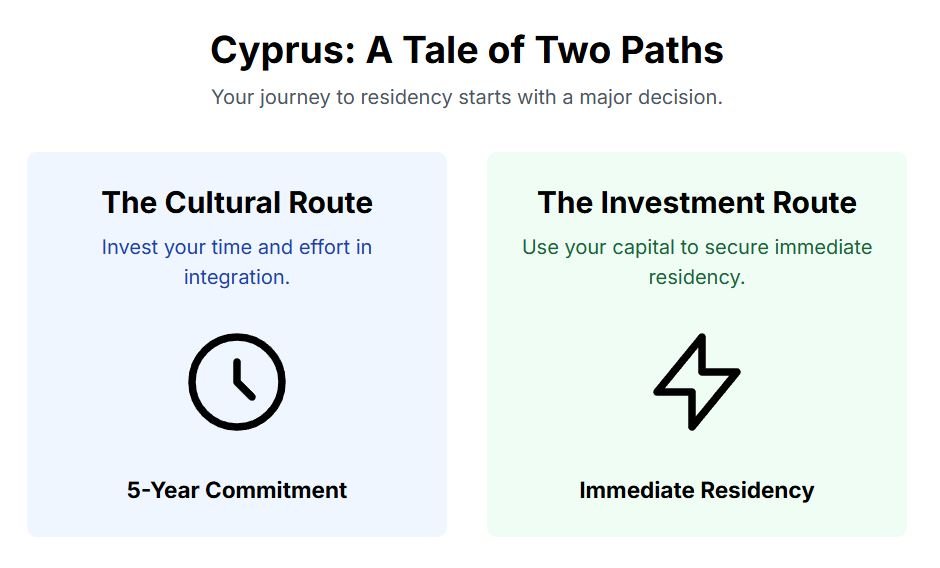
You must choose between a 5-year path requiring an A2 Greek certificate and proof of at least €9,568 in annual income, or immediate residency for a €300,000 investment.
The language route requires A2 Greek plus cultural knowledge requirements. A2 means basic proficiency — manageable for many people but demanding consistent study.
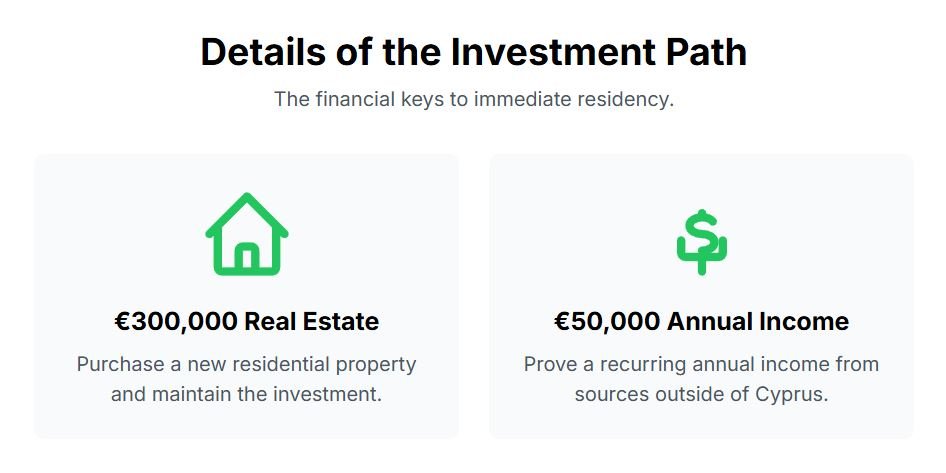
The investment alternative demands €300,000 in real estate plus €50,000 annual income proof. The property must be residential, and you must maintain this investment through your residency period. The €50,000 annual income requirement must come from sources outside Cyprus. This dual approach caters to different priorities and resources, making Cyprus quite flexible.
13. Austria
Austria represents an interesting approach. In exchange for the right to live in a place with high quality of life, you have a difficult language to learn. The B1 German requirement represents a significant linguistic undertaking that eliminates many applicants.
Module Two of the Integration Agreement also combines comprehensive German language skills with cultural knowledge requirements.

The financial requirements, however, are less than one could expect. Austria requires just €15,287 annually for singles and €24,000 for couples.
12. Lithuania
Lithuania requires two separate exams. You must learn both Lithuanian language fundamentals and constitutional law simultaneously.
Fortunately, Lithuania requires only A2 level Lithuanian proficiency rather than the B1 requirements found in other countries mentioned so far. A2 means elementary proficiency for routine tasks and familiar topics, and it can be achieved in less than 200 hours of study.
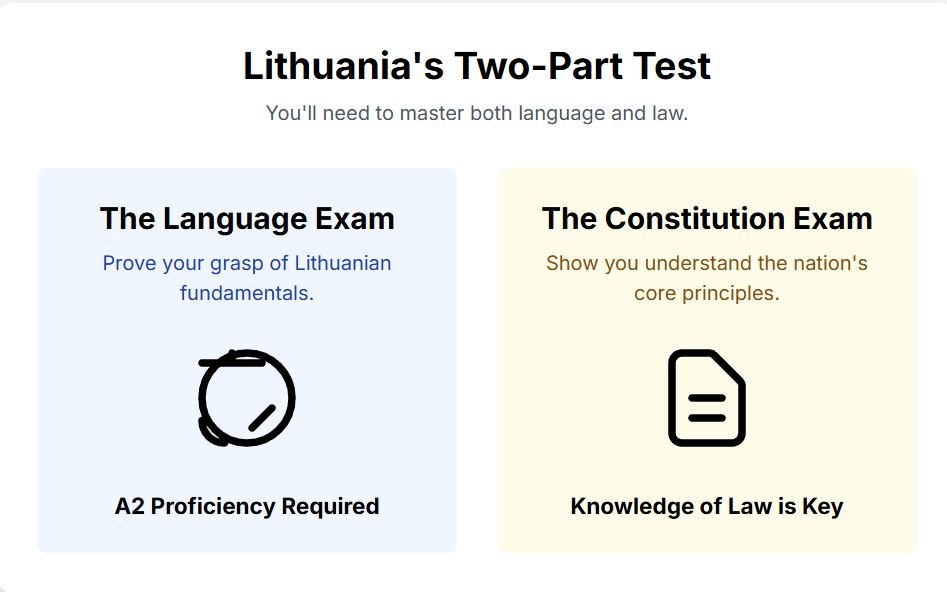
The financial requirements are relatively low at €1,038 monthly for work-based permits, or the alternative of proving a sum of €12,000 in savings. However, they are tied to minimum salary standards, creating automatic increases each year as wages rise.
11. Hungary
Hungary being in 11th place might shock you because they have the EU’s second-shortest residency requirement at just three years — one of Europe’s fastest routes to permanent residency.
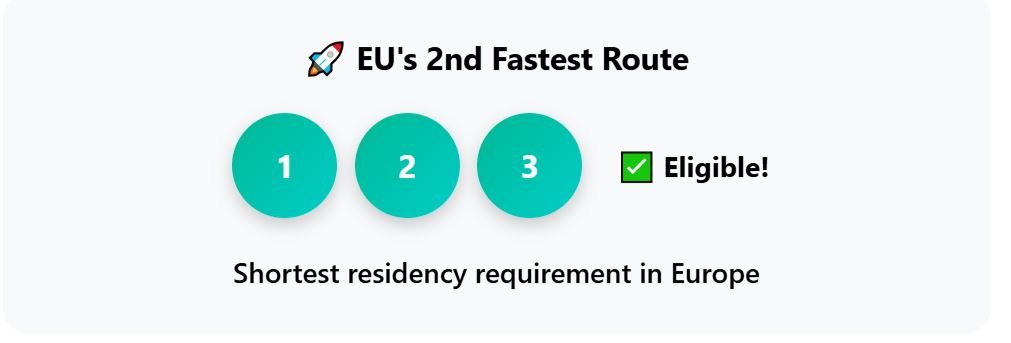
But, and often there is a “but,” 2025 brought a game-changing requirement that disadvantages those who are not good at learning a new language. Hungary now requires a mandatory culture exam that must be taken entirely in the Hungarian language.
This is not just a basic language test — it is a comprehensive examination covering Hungarian history, national symbols, and European culture.
Hungarian belongs to the Finno-Ugric family, completely unrelated to most European languages. It’s probably the most difficult language in Europe. Finns and Estonians might disagree, but it’s a close call between the three.
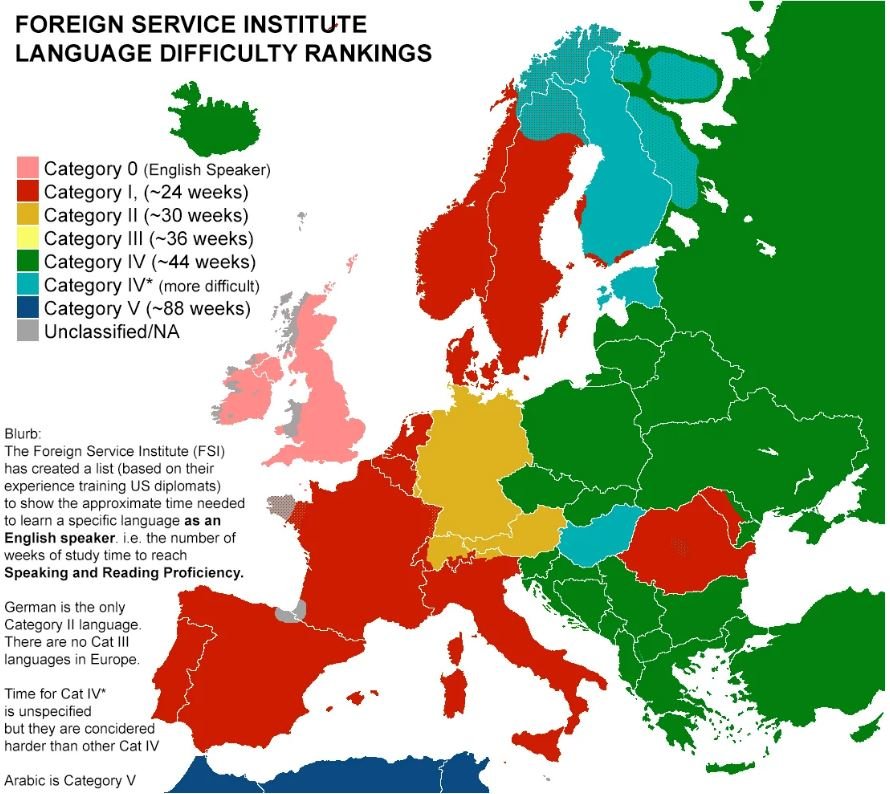
For many, the low three-year residence requirement becomes meaningless when it takes more than three years to learn Hungarian.
10. Greece
As we move up the rankings, obtaining permanent residence becomes increasingly easier, and Greece at number 10 shows this trend clearly.
Greece demands just an A2 Greek language certificate. The Greek language and alphabet present a considerable learning curve for English speakers, but A2 is still a basic level.
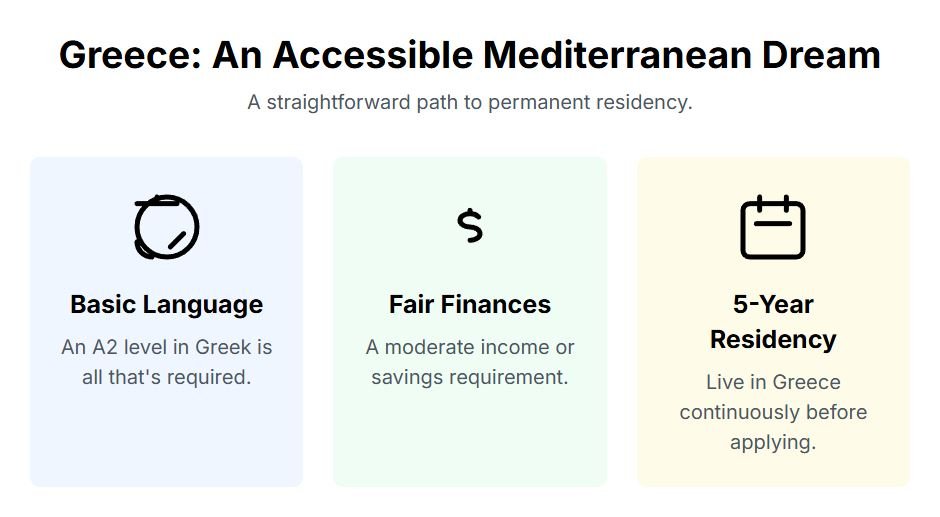
You need €24,000 annual income or can deposit €48,000 in a Greek bank account. This represents a fair price considering the advantages in terms of health — Greek residents have among Europe’s longest lifespans, high quality of life, and, most importantly, one of the lowest income taxes on overseas income in all of Europe.
The FIP visa, often used by retirees and digital nomads, makes Greece very attractive. Greece also requires five years of continuous legal residence before you can apply for permanent residency. The moderate financial threshold makes Greece accessible for many retirees seeking a Mediterranean lifestyle with reasonable requirements.
9. Bulgaria
Bulgaria looks incredibly attractive with just a €3,216 annual income requirement, making it one of Europe’s most budget-friendly permanent residency options.
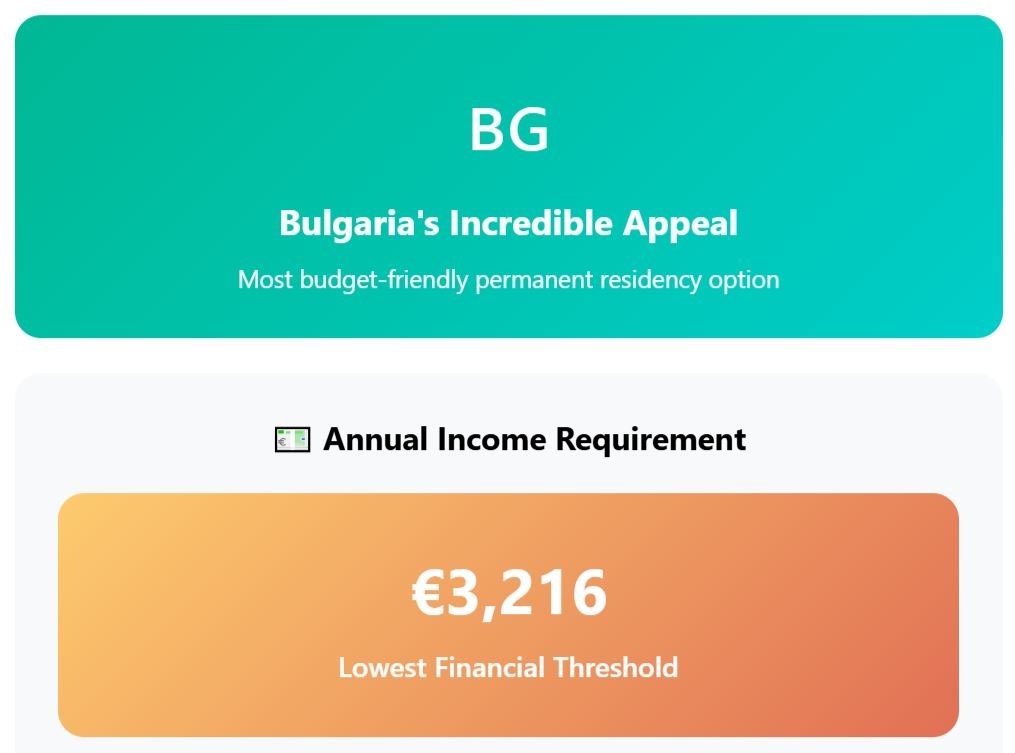
This low financial threshold opens doors for retirees and remote workers who can’t meet the higher requirements in other EU countries. Bulgaria requires five years of legal residence for permanent residency, but there is a catch: they enforce stricter physical presence rules than the standard EU guidelines.
You must be physically present in Bulgaria for at least 30 months during those five years. The absence of a language test for permanent residency in Bulgaria is advantageous for the initial application.
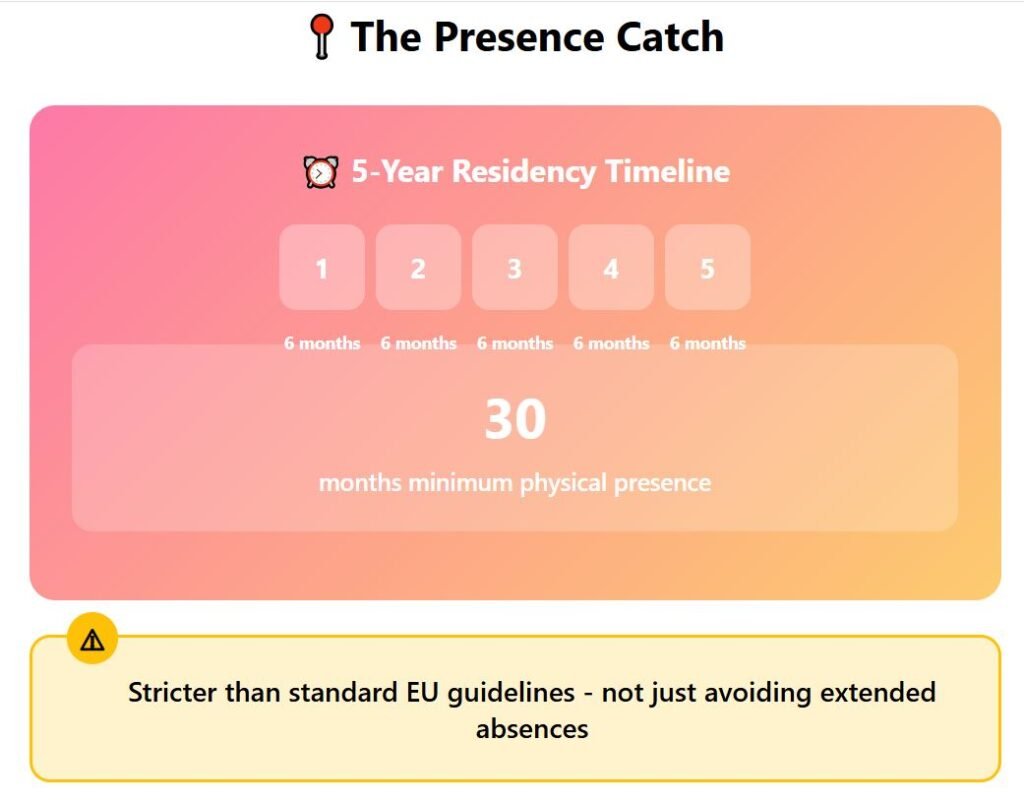
You can obtain permanent residency without proving Bulgarian language skills, unlike most other EU countries that demand formal language certification. The €3,216 requirement represents one of the lowest barriers in the entire EU — perfect for modest retirement incomes or location-independent professionals.
8. France
France currently requires A2 French, but a major change is coming. Starting 1st of January 2026, new applicants must demonstrate B1 level French proficiency instead of the current A2 requirement.
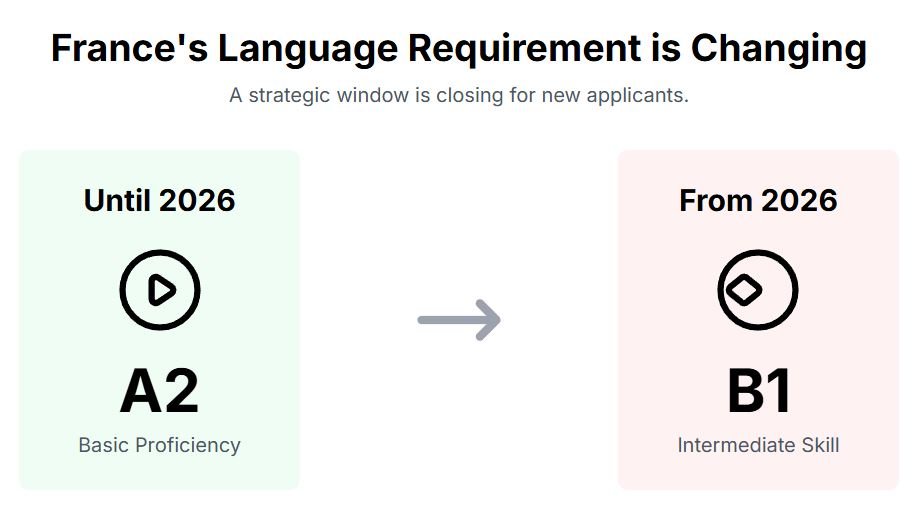
The current A2 level remains acceptable until January 2026, creating a strategic window for prospective applicants who want to avoid the harder requirements.
The visitor visa offers exceptional appeal with just an €18,000 to €30,000 annual income range. This flexibility accommodates various financial situations, from modest retirement incomes to higher investment returns.
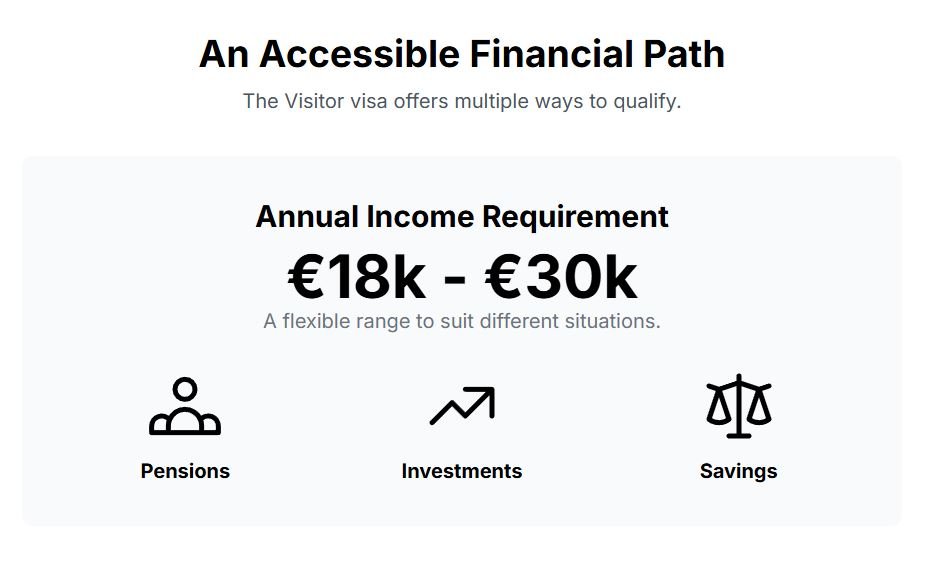
The shift from A2 to B1 represents a considerable increase in language proficiency demands. A2 focuses on basic communications in familiar situations, while B1 requires intermediate skills. Applicants over 65 years old receive language requirement exemptions, making France particularly attractive for older retirees who can bypass French learning entirely.
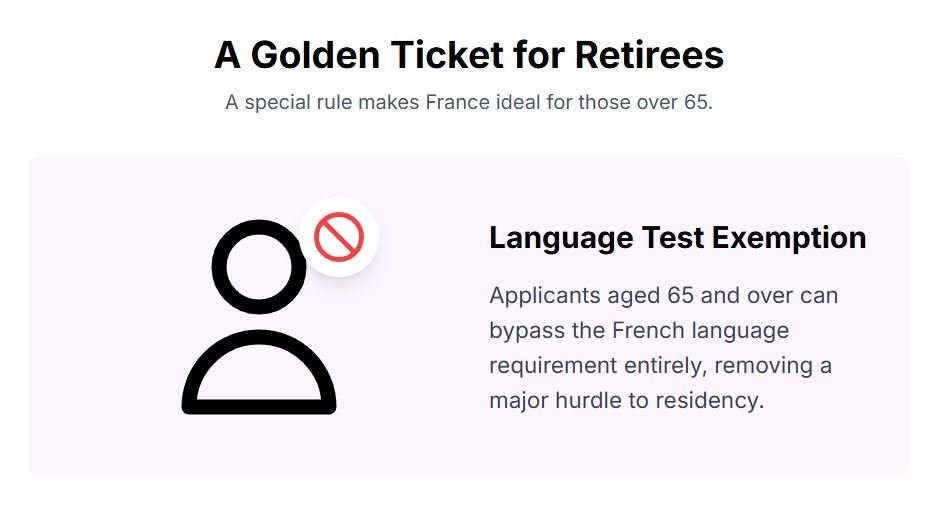
7. Sweden
Sweden requires five years of continuous legal residence before you can apply for permanent residency. Applicants must have an after-tax income sufficient to cover a standard amount for living expenses — 6,900 crowns per month in 2024 — plus their actual housing costs.
No language requirements exist yet, but there are proposed changes to implement new requirements like A2 level Swedish. Another curious point about Sweden is that they are the easiest country in Europe to obtain citizenship — one of the few that does not require any language test yet.
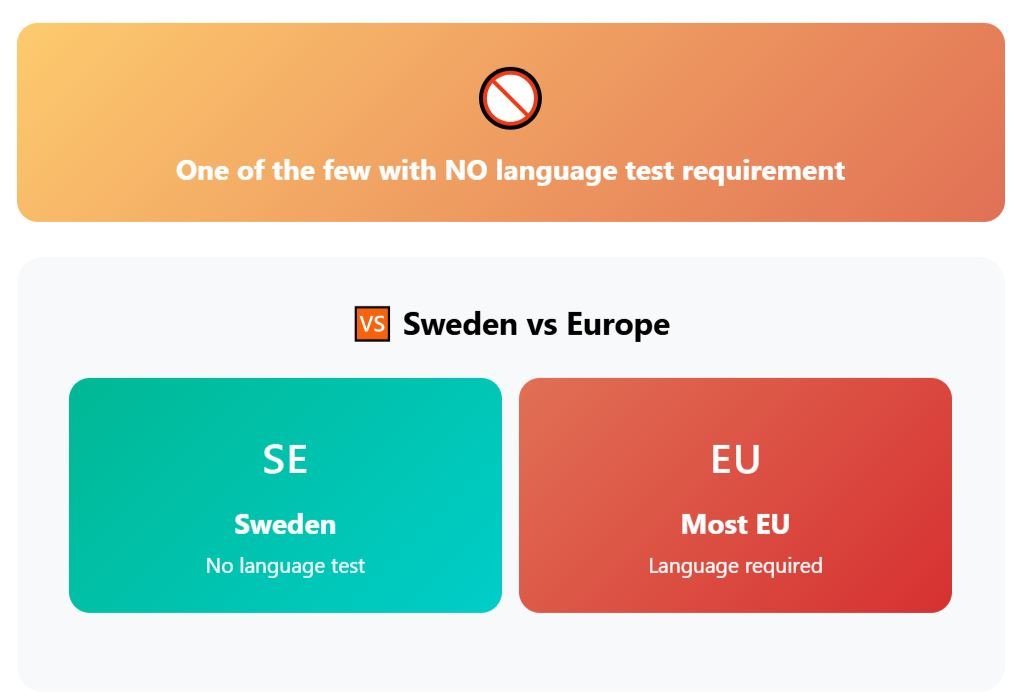
6. Latvia
Latvia offers one of the EU’s lowest financial thresholds at just €8,160 annually, making it very accessible for budget-conscious retirees and remote workers.
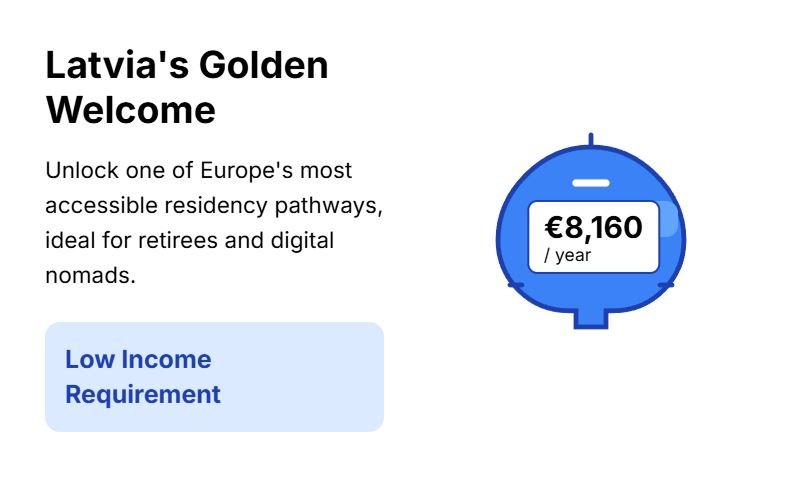
This represents one of Europe’s most affordable permanent residency pathways. However, some other requirements make this bargain a little more complex than it appears at first glance.
You cannot exceed 12 months of total absence during the five-year period, making frequent travel complicated and requiring careful planning for any time spent outside Latvia.
Latvian belongs to the Baltic language family with complex grammatical structures that differ greatly from Romance or Germanic languages. Fortunately, A2 is a relatively basic level, so it’s doable. Therefore, both the A2 Latvian language and the €8,000 annual income requirement are accessible demands, granting Latvia the sixth place.
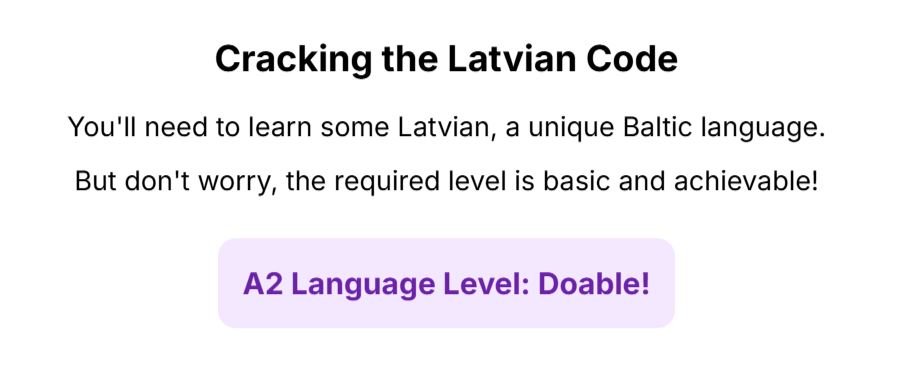
5. Spain
Spain’s non-lucrative visa has become legendary among retirees seeking European residency. The visa offers a well-defined pathway with established processes that thousands have successfully navigated.
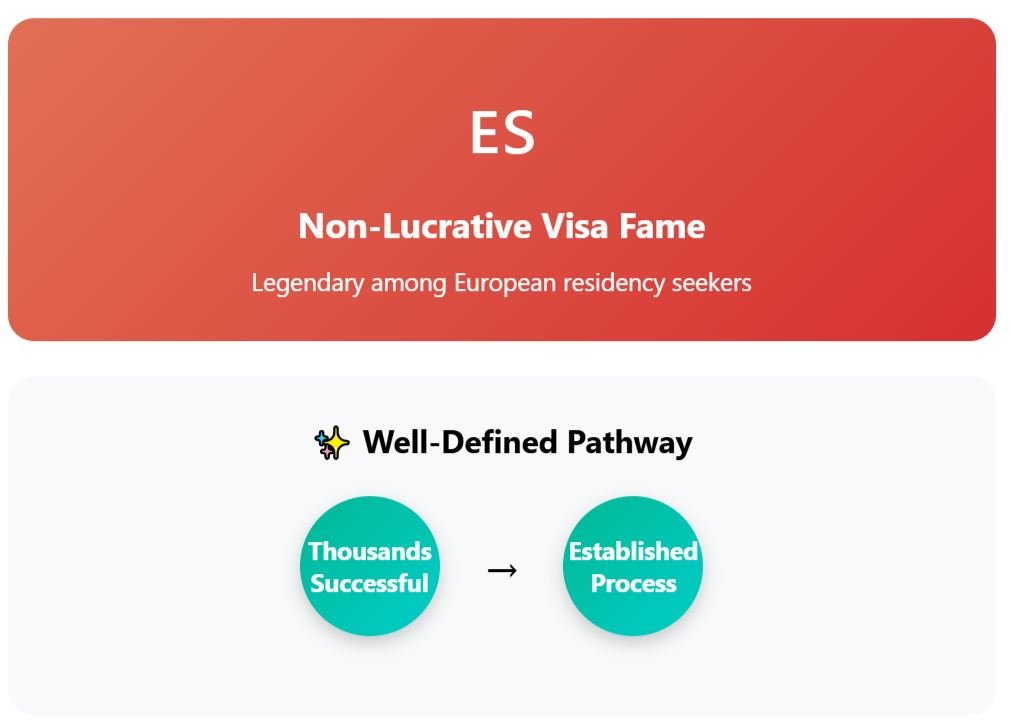
The €28,000 annual income requirement for the primary applicant plus €7,200 per dependent adds up quickly for families but remains manageable for many retirees with solid pension income.
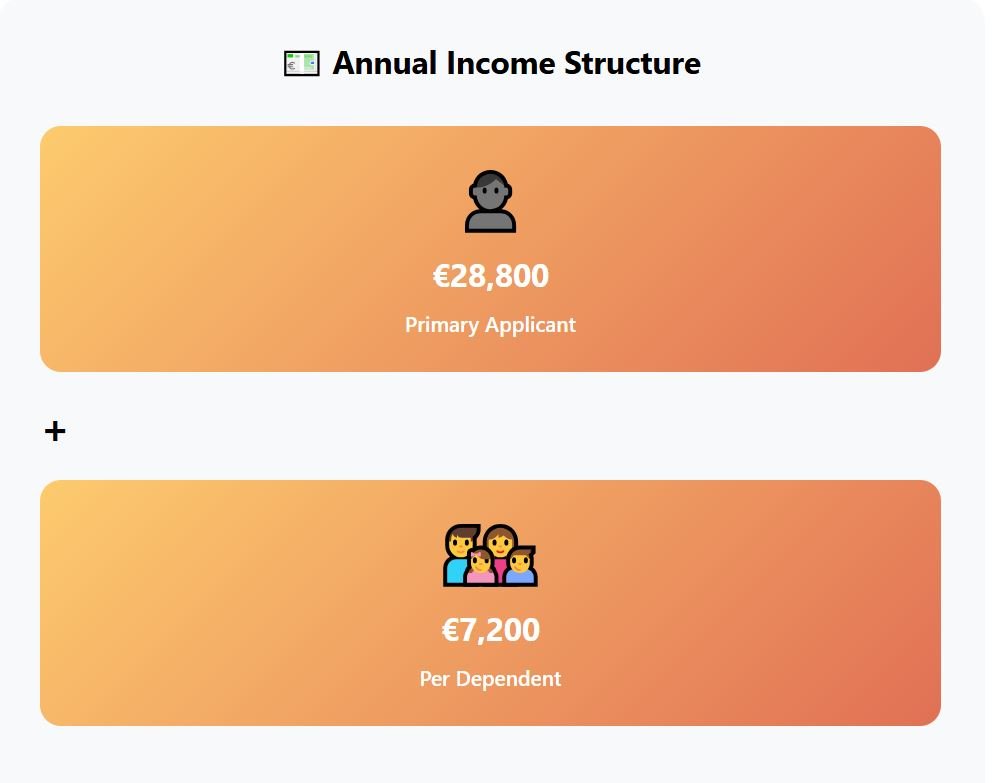
No formal language test exists for residency applications, creating flexibility that eliminates testing stress. However, integration proof is required, and officials evaluate your Spanish language ability during the assessment process.
While A2 Spanish is not mandatory, lacking basic Spanish skills could negatively impact your application. The non-lucrative visa provides clear income criteria, a structured renewal process, and predictable timelines that make planning straightforward.
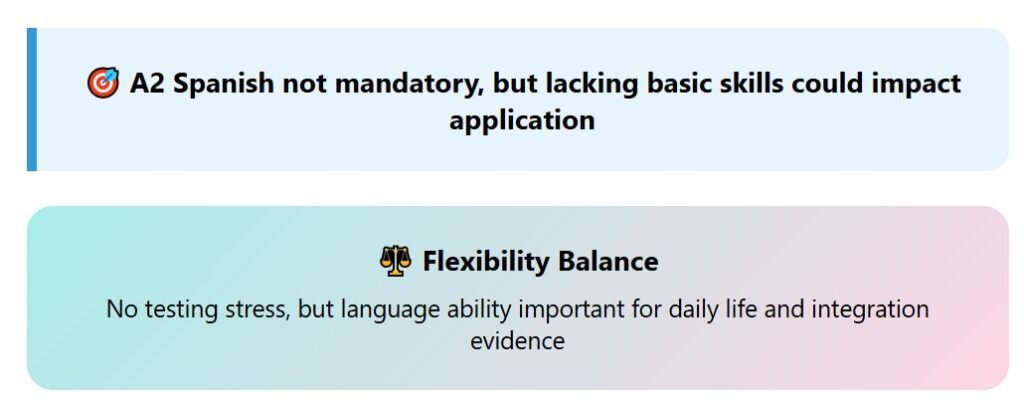
4. Italy
The Italian elective residency visa attracts retirees with a straightforward approach to permanent residency applications. Italy requires five years of continuous legal residency before you can apply.
The €31,000 annual income requirement for singles and €38,000 for couples represents significantly higher thresholds than neighboring countries. This passive income must come from pensions, investments, or rental income — not employment or remote work.
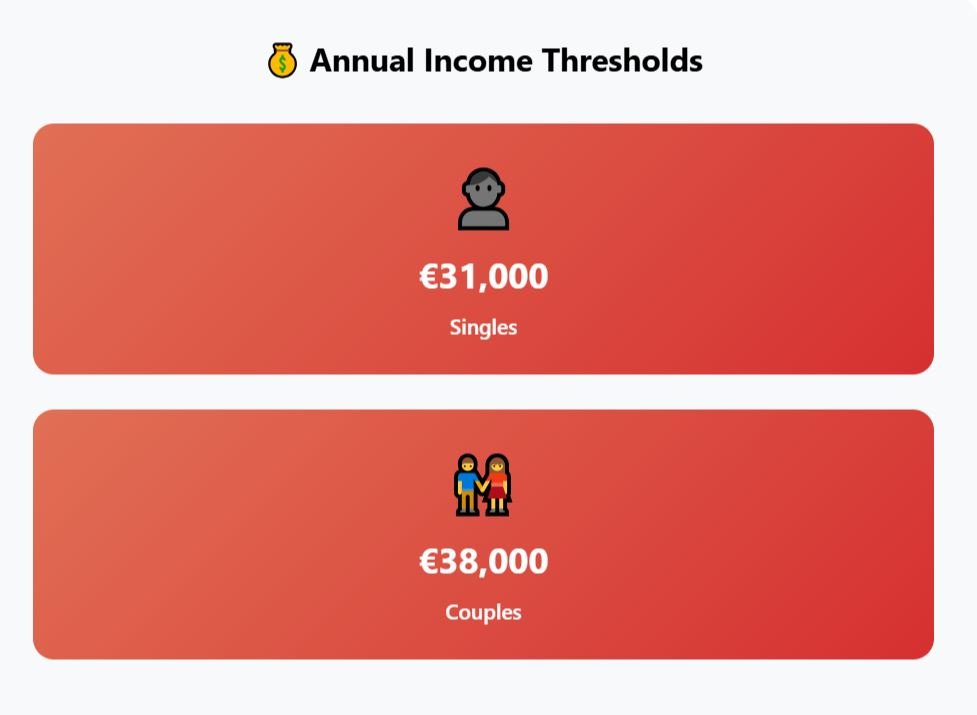
Another pro is that Italian is a relatively easy language to learn, and they just require A2 level. Achieving A2 level requires basic competency in everyday situations and direct exchanges on familiar topics.
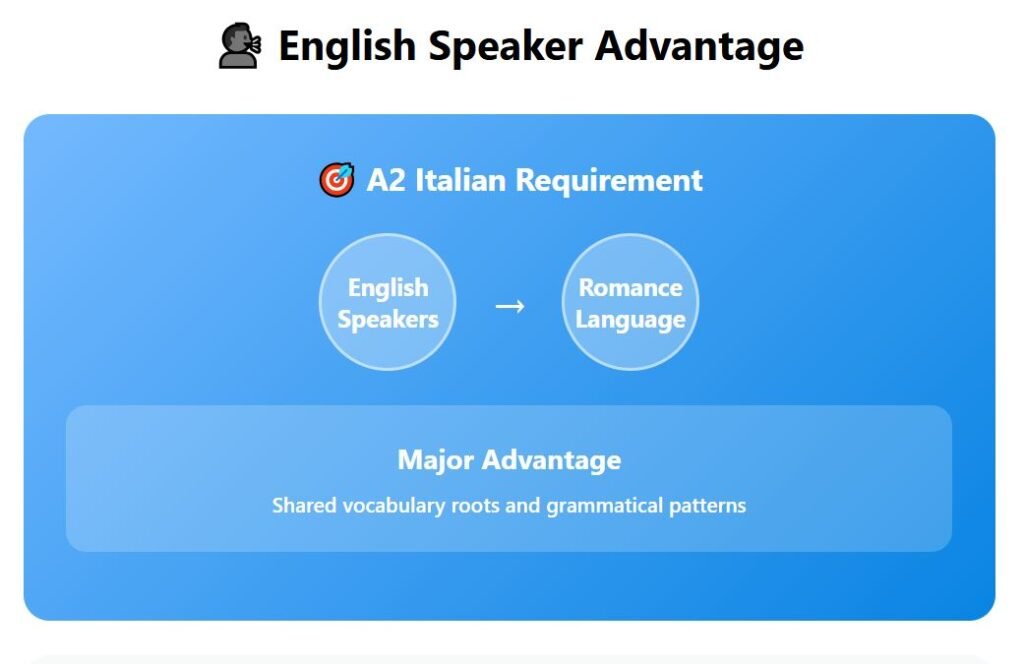
The easier language requirements and the Mediterranean lifestyle compensate for the bureaucracy that you will certainly face.
3. Portugal
Portugal’s D7 visa has become the gold standard for retirees seeking European residency. The country requires five years of continuous legal residence before you can apply, and the D7 visa offers a well-defined pathway that thousands have successfully navigated.
The €10,000 annual passive income requirement seems almost too good to be true when compared to other European options. The requirement of just A2 level Portuguese is also a significant plus for English speakers.
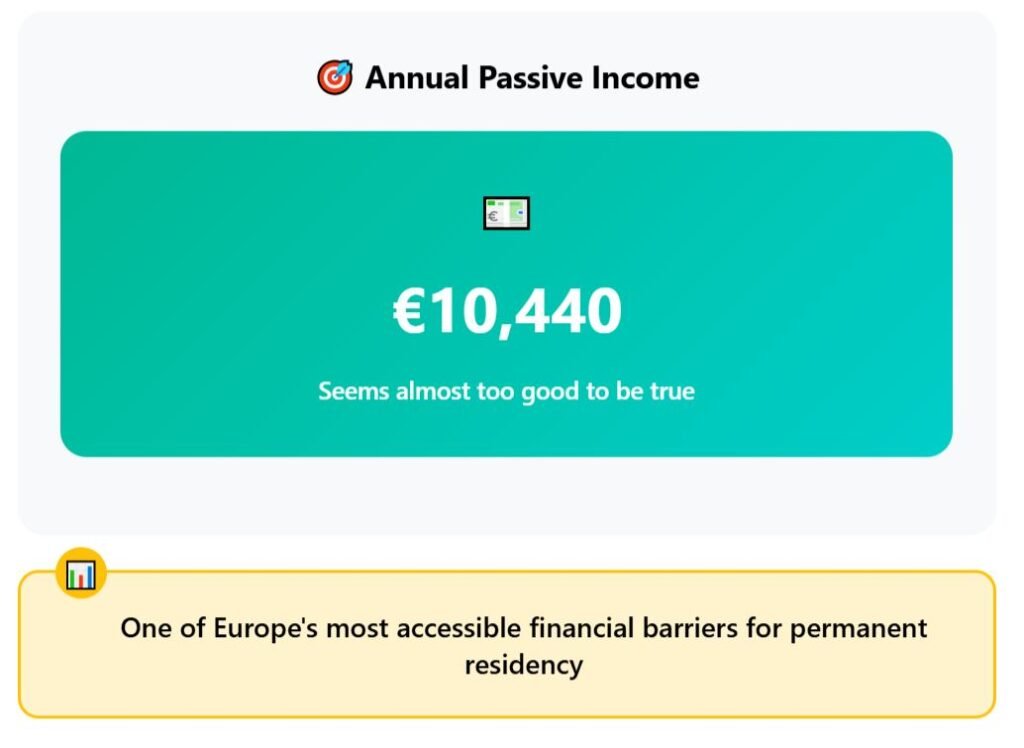
Portuguese belongs to the Romance language family, sharing some vocabulary and grammatical patterns that make learning easier. Brazilian resources — including movies, music, and online content — provide a bonus of practice materials that are not available for smaller European languages.

Portugal also allows you to combine different income sources to meet the requirement, providing options for retirees with variety. Established English-speaking communities throughout Portugal make it easier to establish social connections.
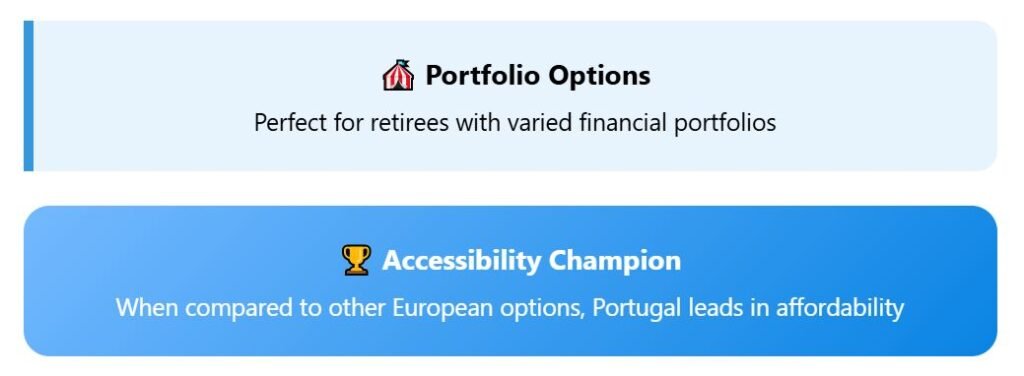
These expert communities offer practical guidance, social interaction, and assistance with bureaucratic processes that smooth your integration journey.
2. Ireland
Ireland has no language barrier for Americans, Canadians, or Australians seeking European residency. No studying, no testing, no stress about achieving proficiency levels.
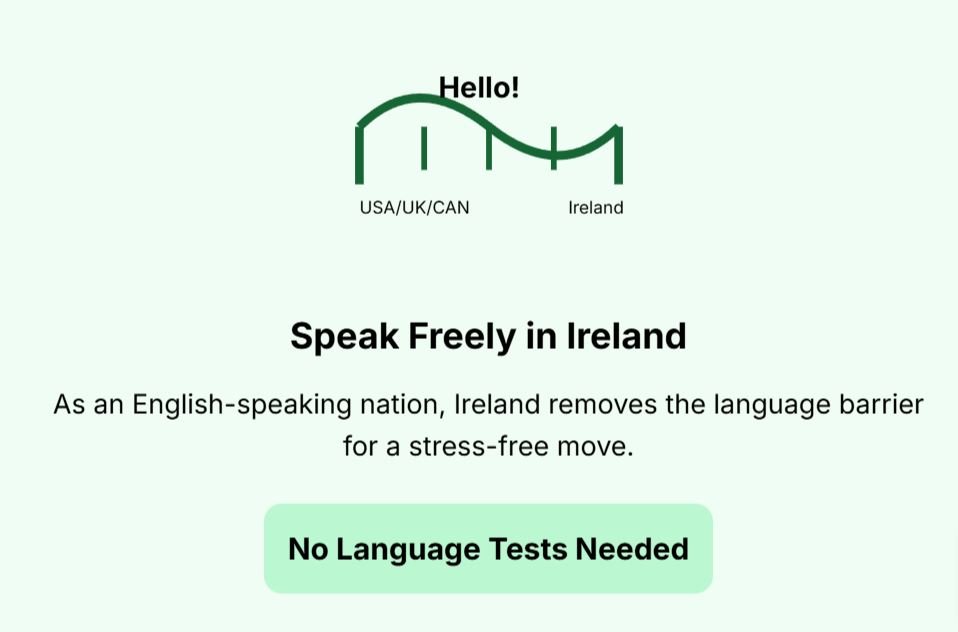
For retirees, the challenge is financial. The only reason Ireland is in second and not first place are the high financial thresholds that offset the language advantage. Retirees need €50,000 annual income plus access to a lump sum equivalent to purchasing a residential dwelling in Ireland.

These requirements represent some of Europe’s highest financial barriers for non-investment residency. However, if you have Irish ancestors, you might be lucky because Ireland is the easiest country in the European Union to obtain citizenship by descent.
1. Belgium
Belgium, like most countries in this list, requires five years of continuous legal residence before you can apply for permanent residency. But no national language test requirement seems almost too good to be true in today’s Europe.
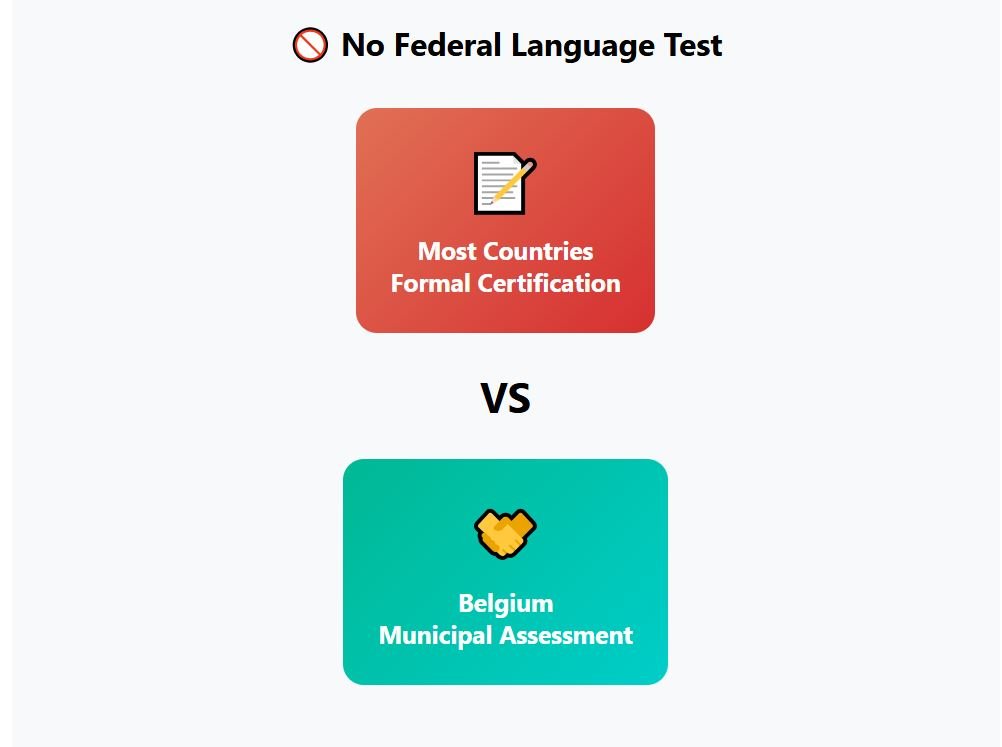
While most countries demand formal language certification, Belgium trusts municipal-level integration assessment instead of standardized testing. Local communes evaluate integration through practical means like employment or rental contracts or community involvement.
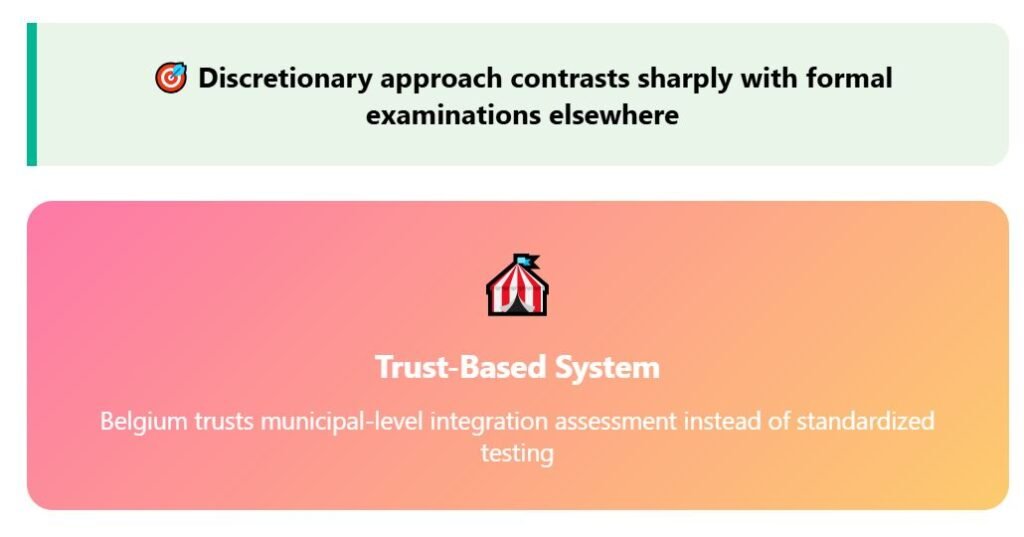
You need €793 monthly plus €264 per dependent — a very low threshold for such a developed country. Curiously, while Belgium has one of the easiest paths to obtain permanent residence in Europe, it’s among the hardest to obtain citizenship by residence.
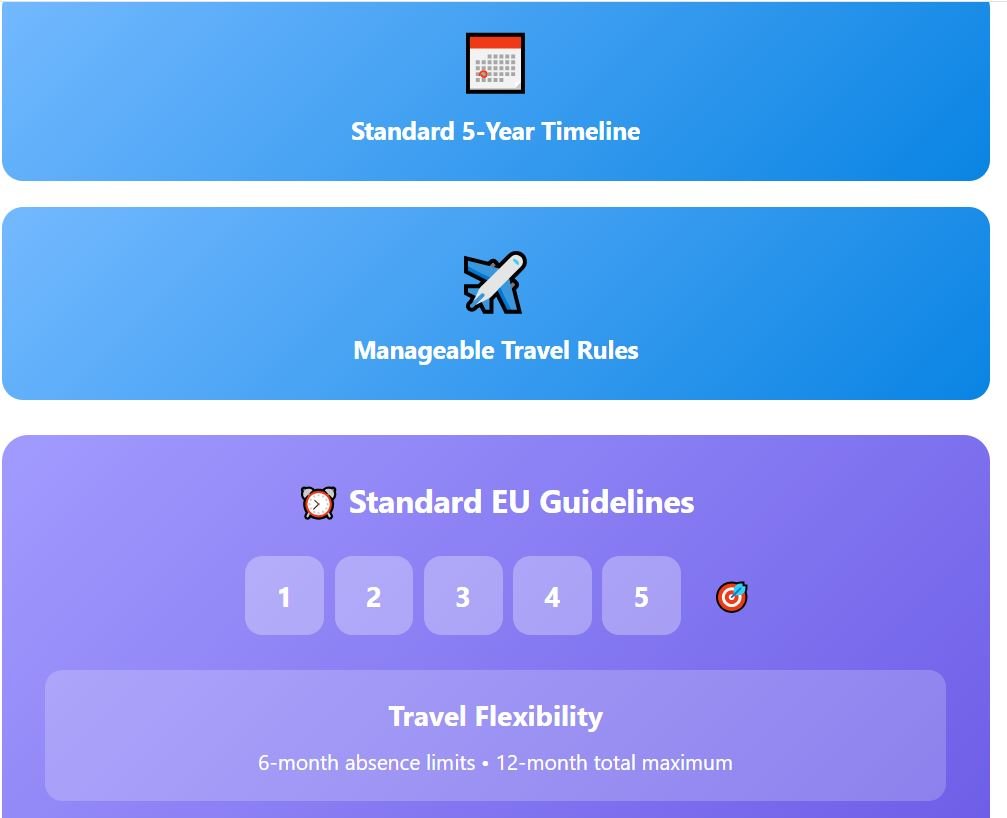
But two very rich European countries have remarkably easy paths for expats to become citizens. Want to discover which countries I’m talking about?
Levi Borba is the founder of expatriateconsultancy.com, creator of the channel The Expat, and best-selling author. You can find him on X here. Some of the links above might be affiliated links, meaning the author earns a small commission if you make a purchase.


